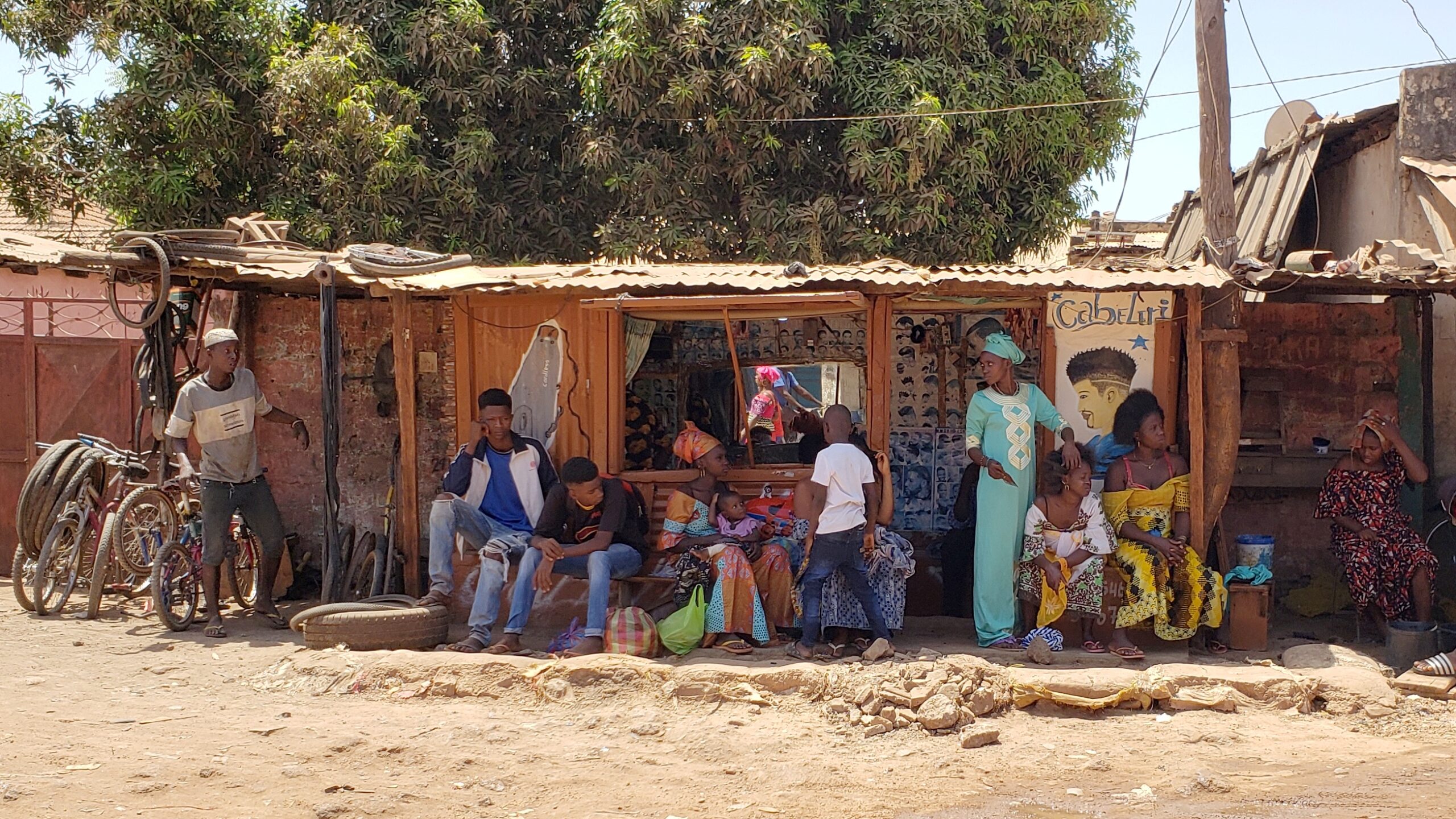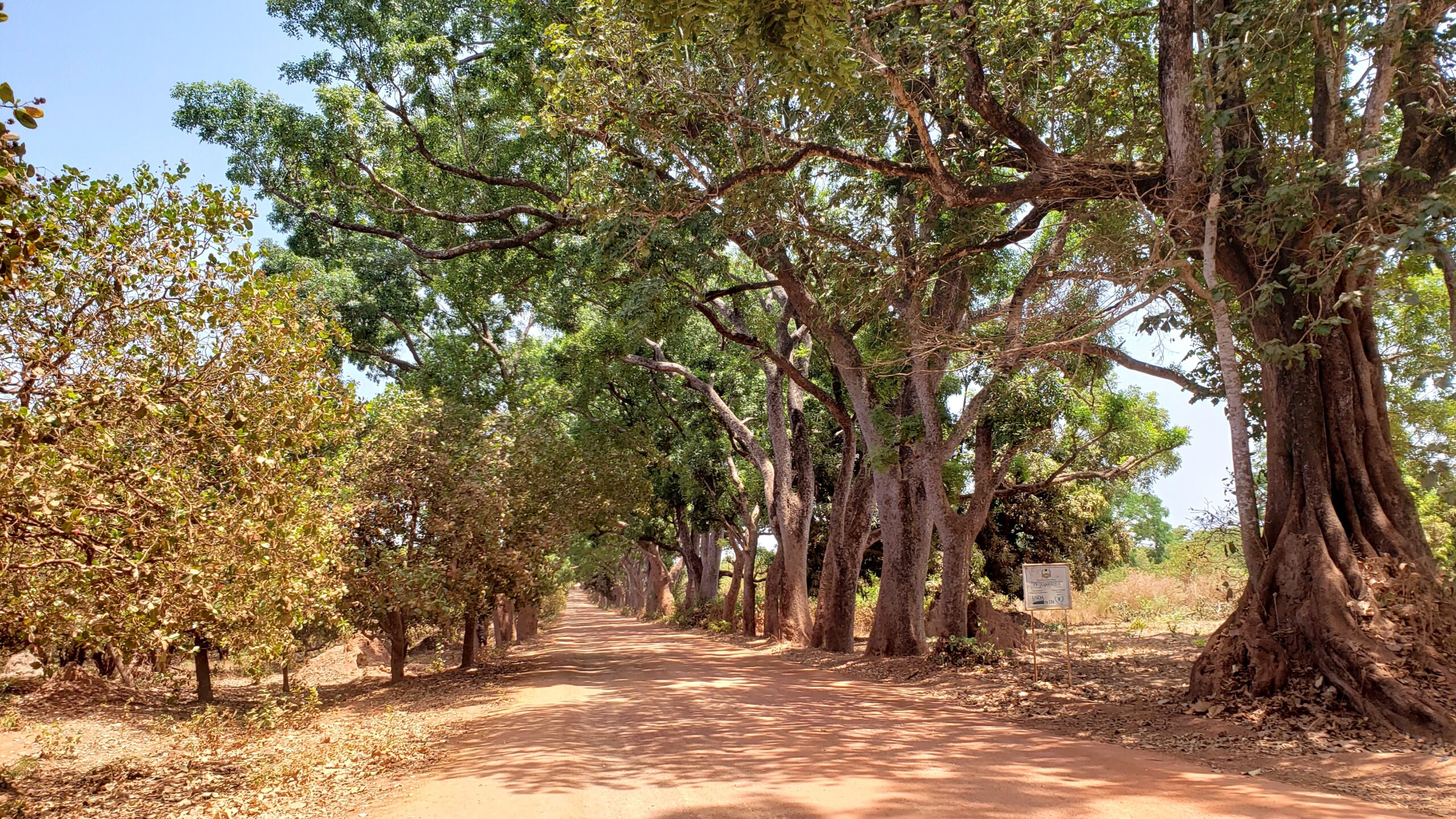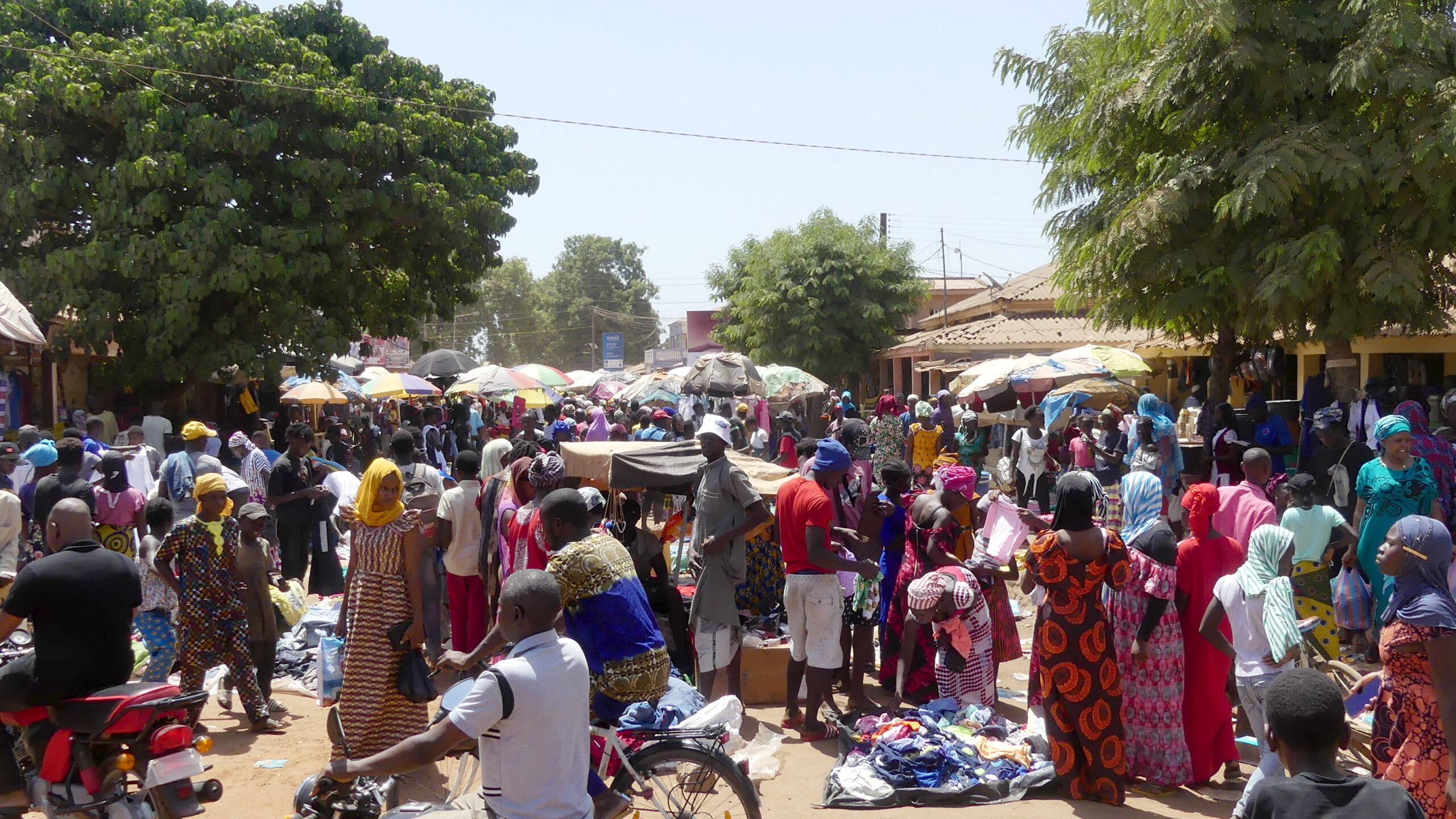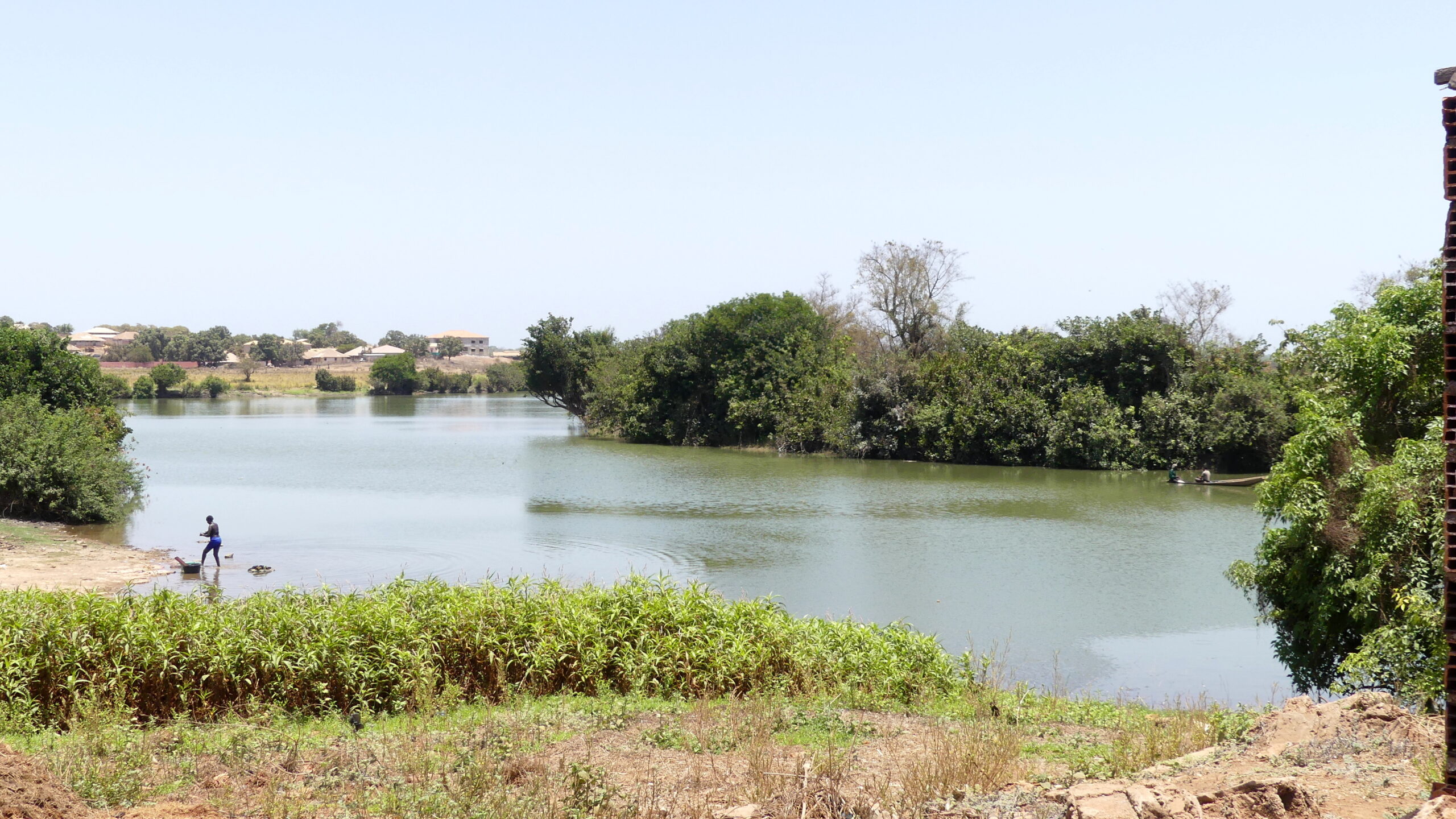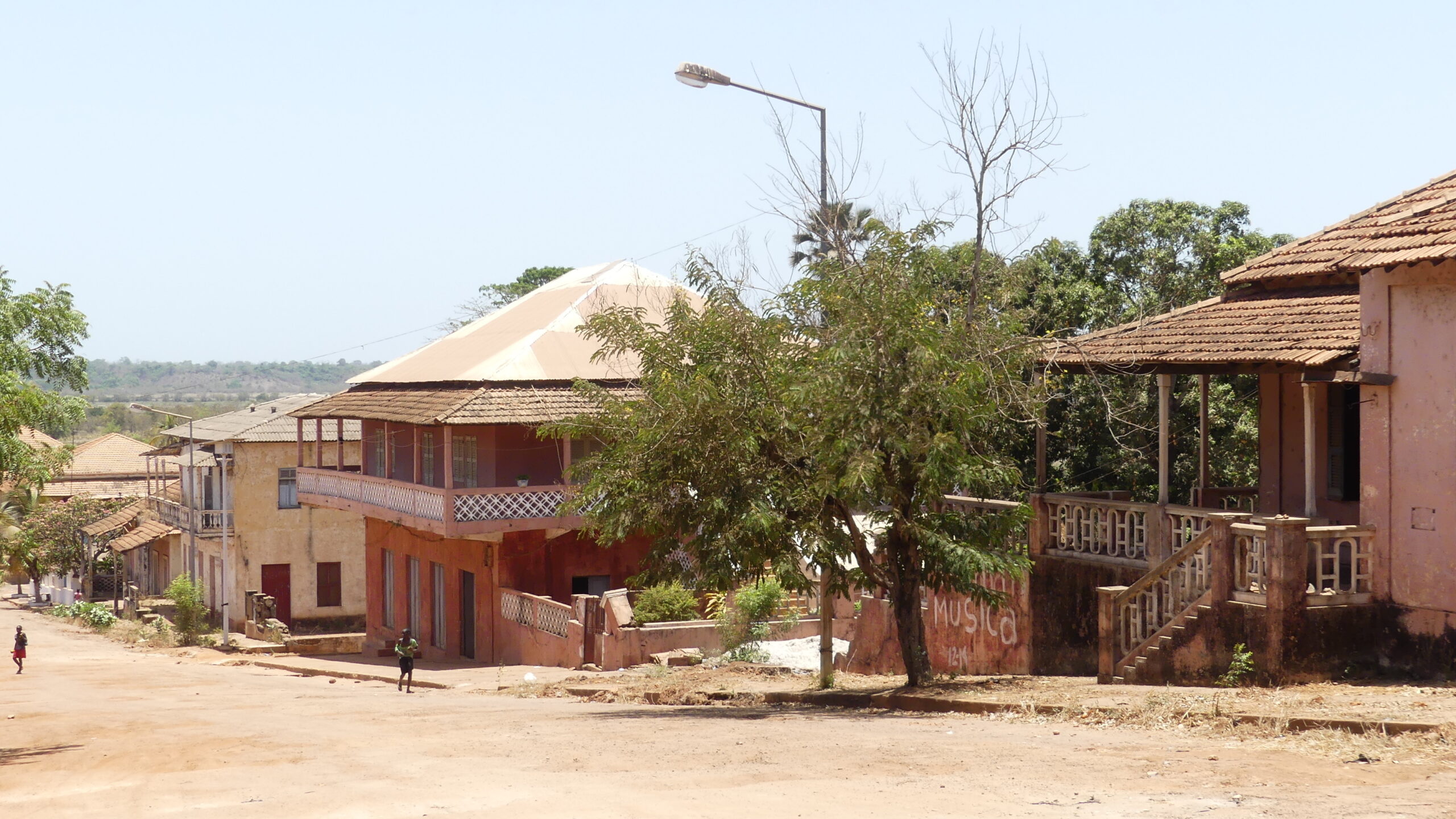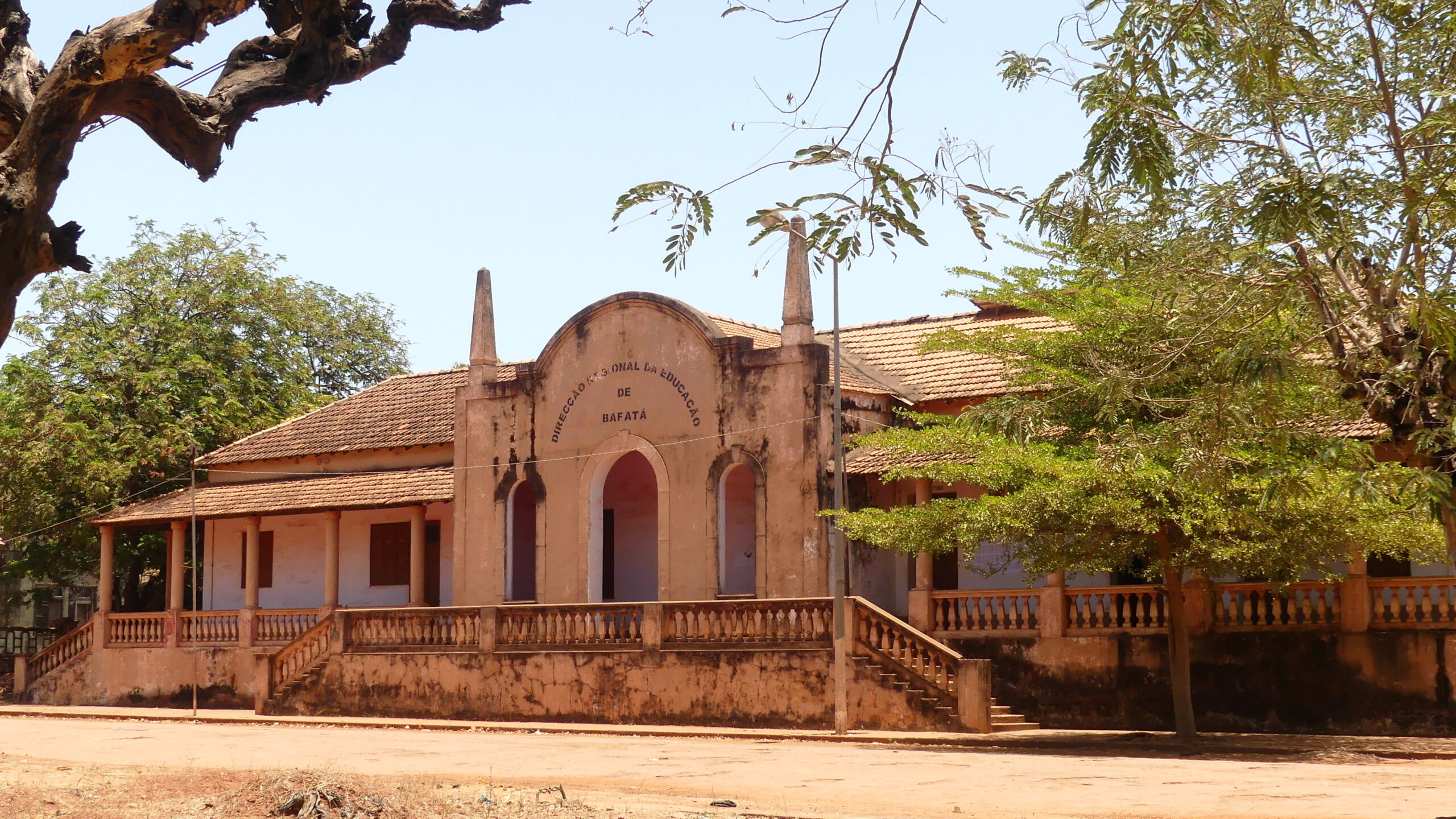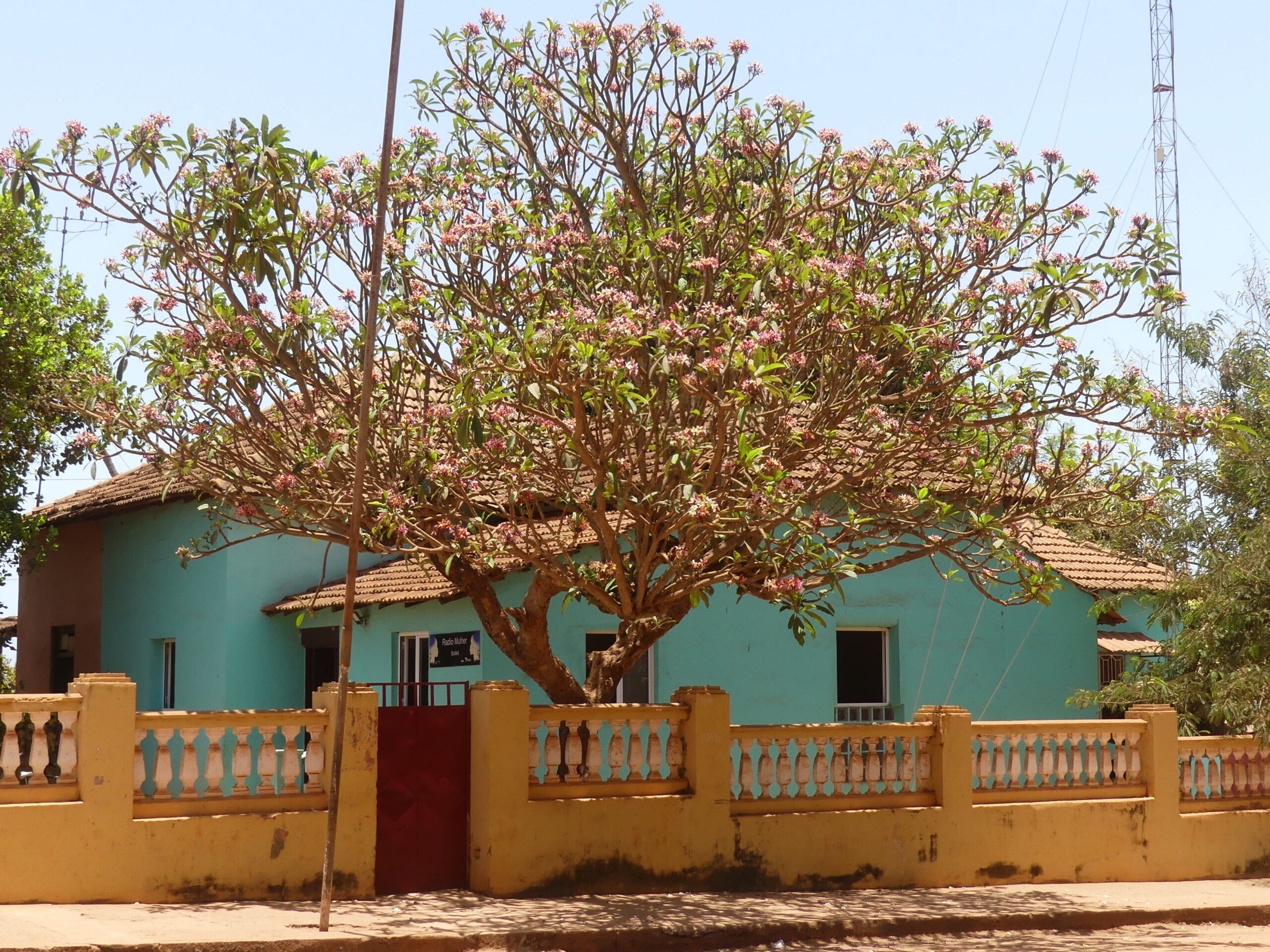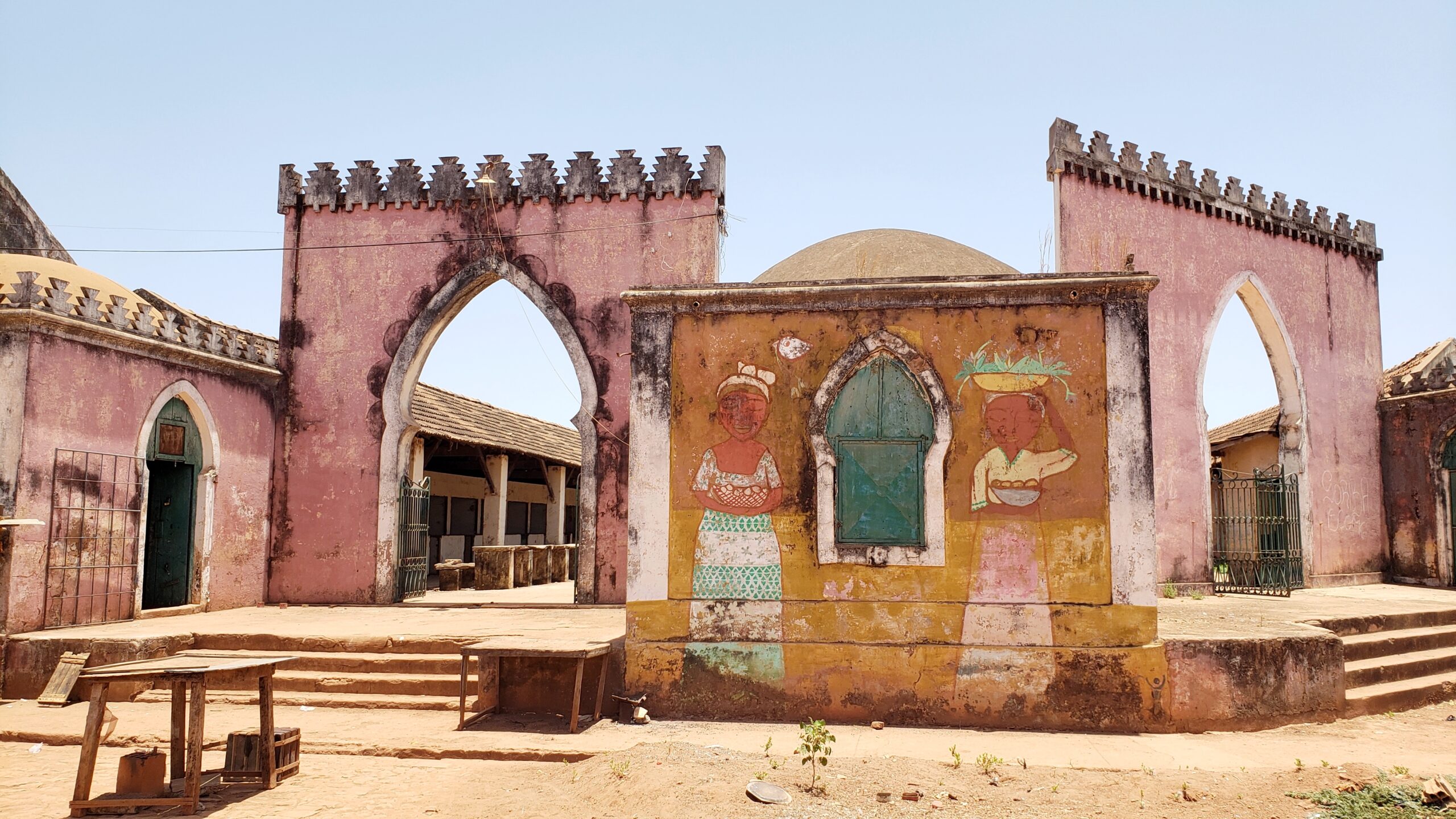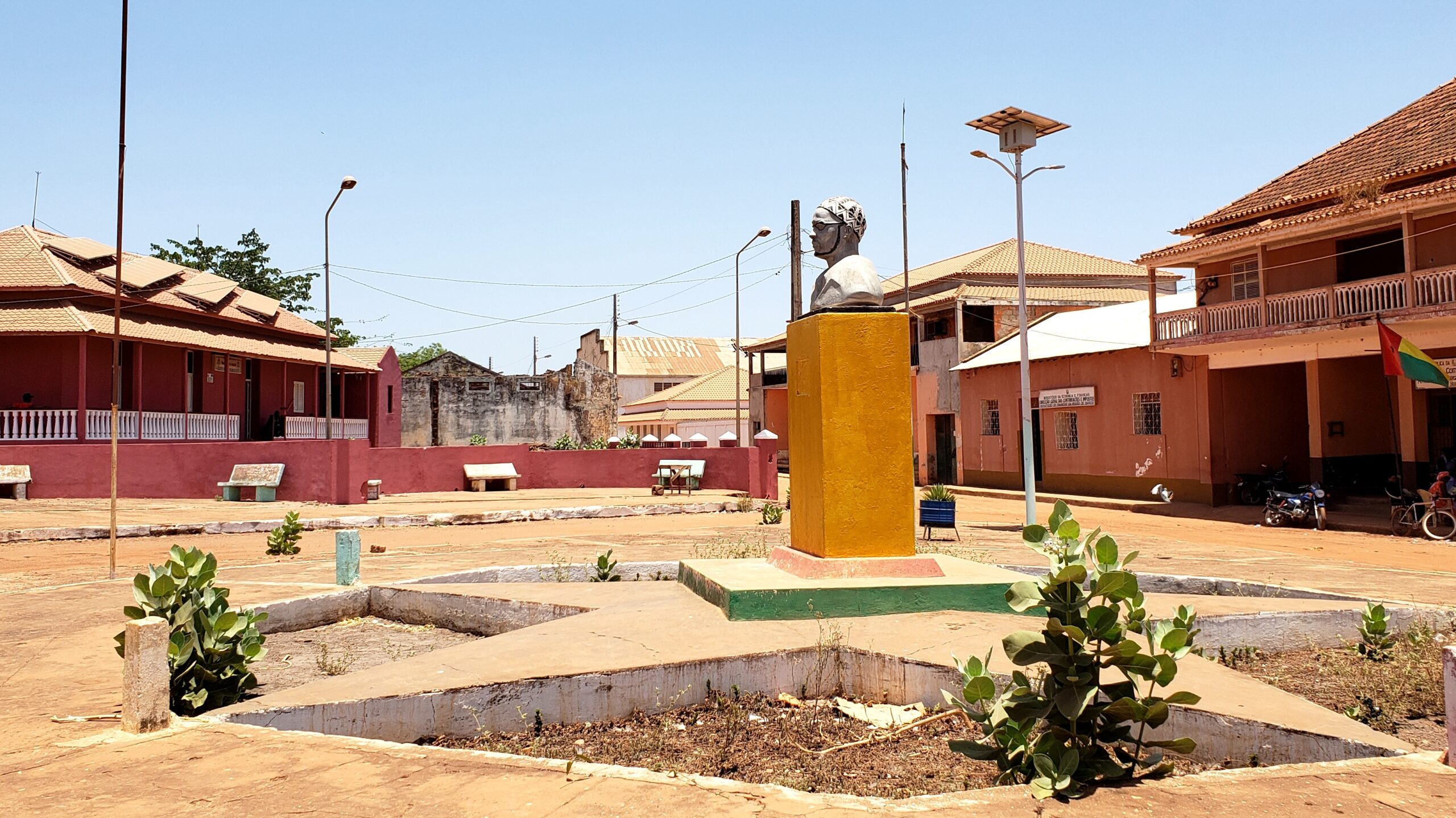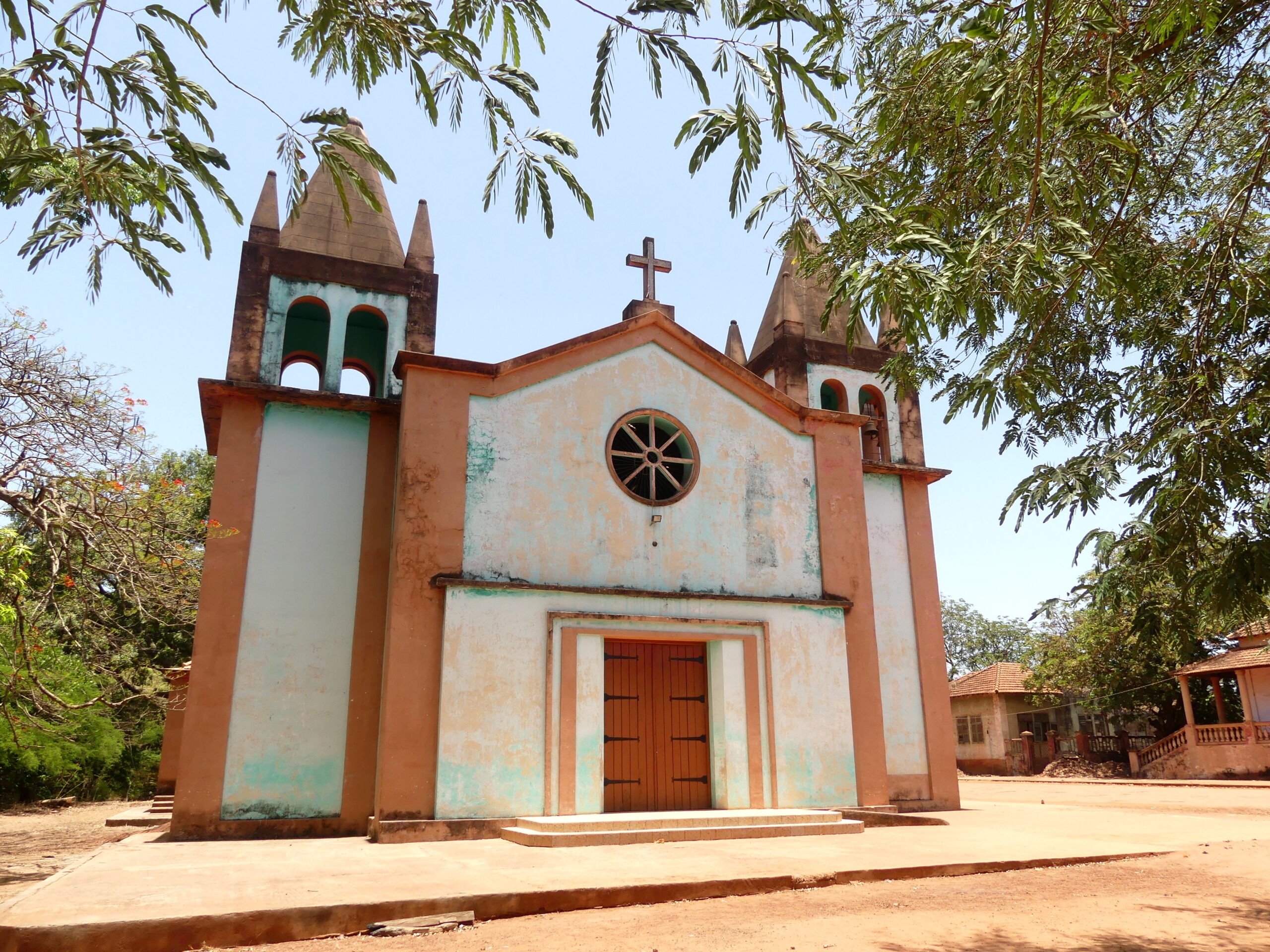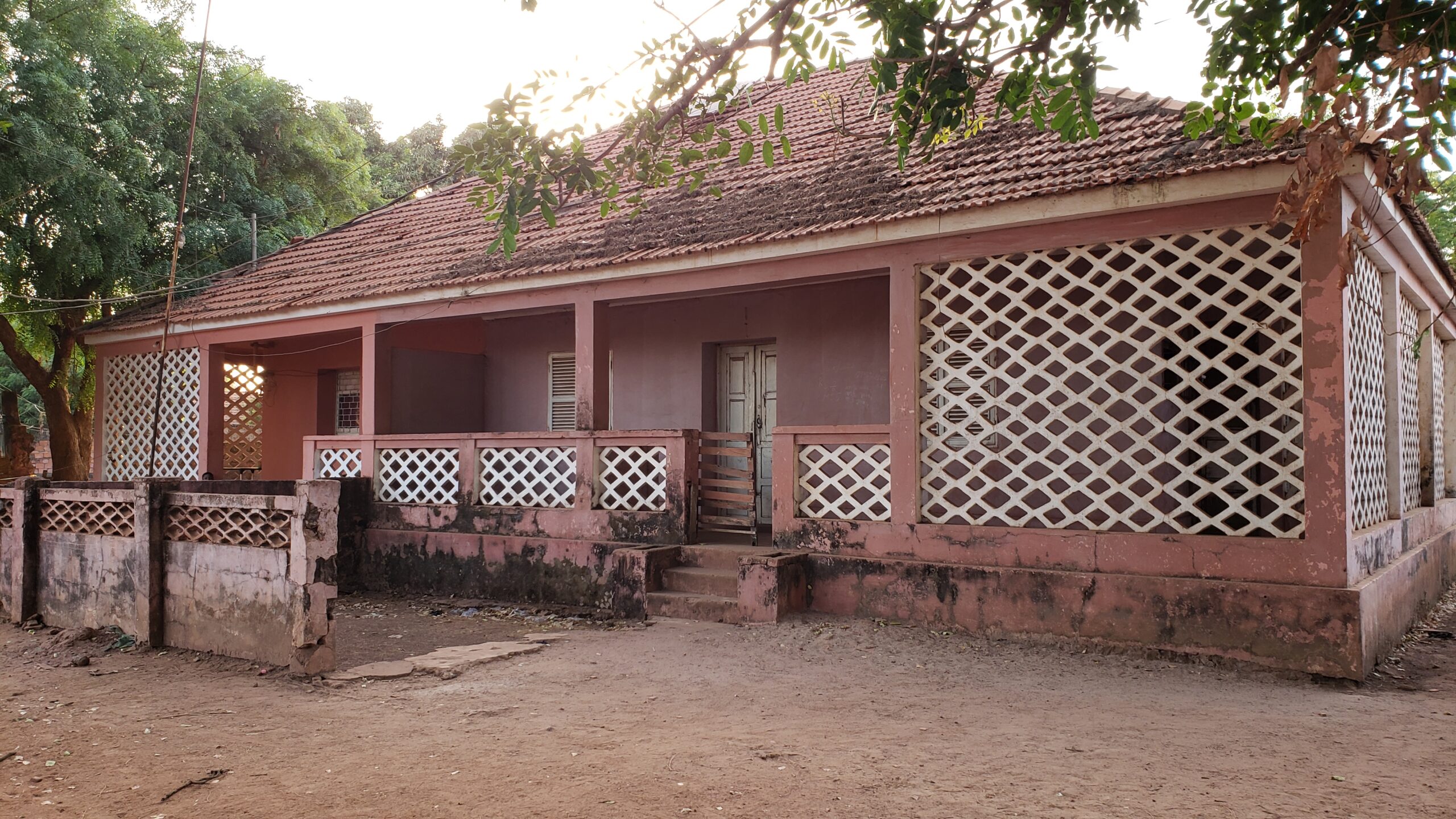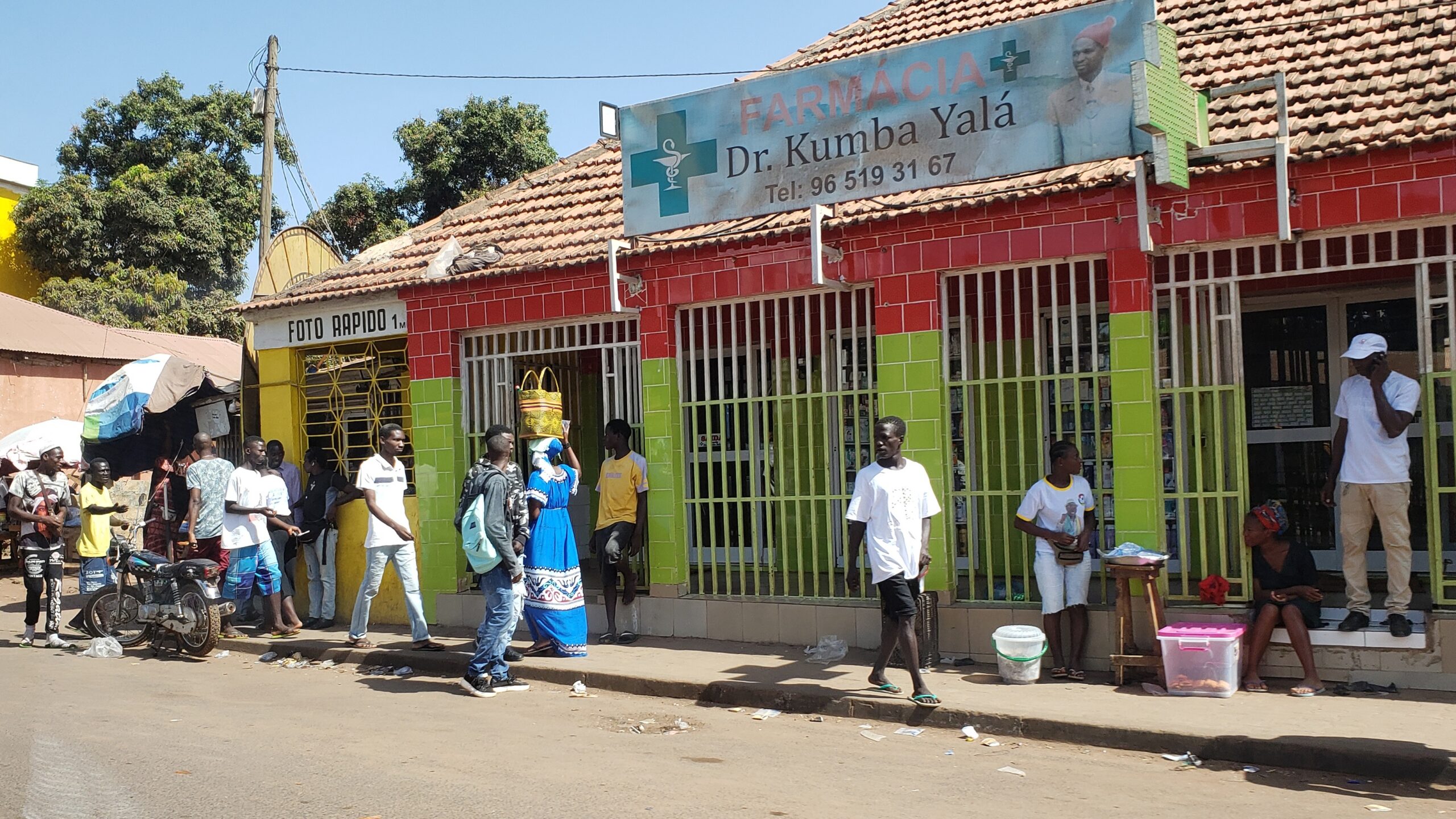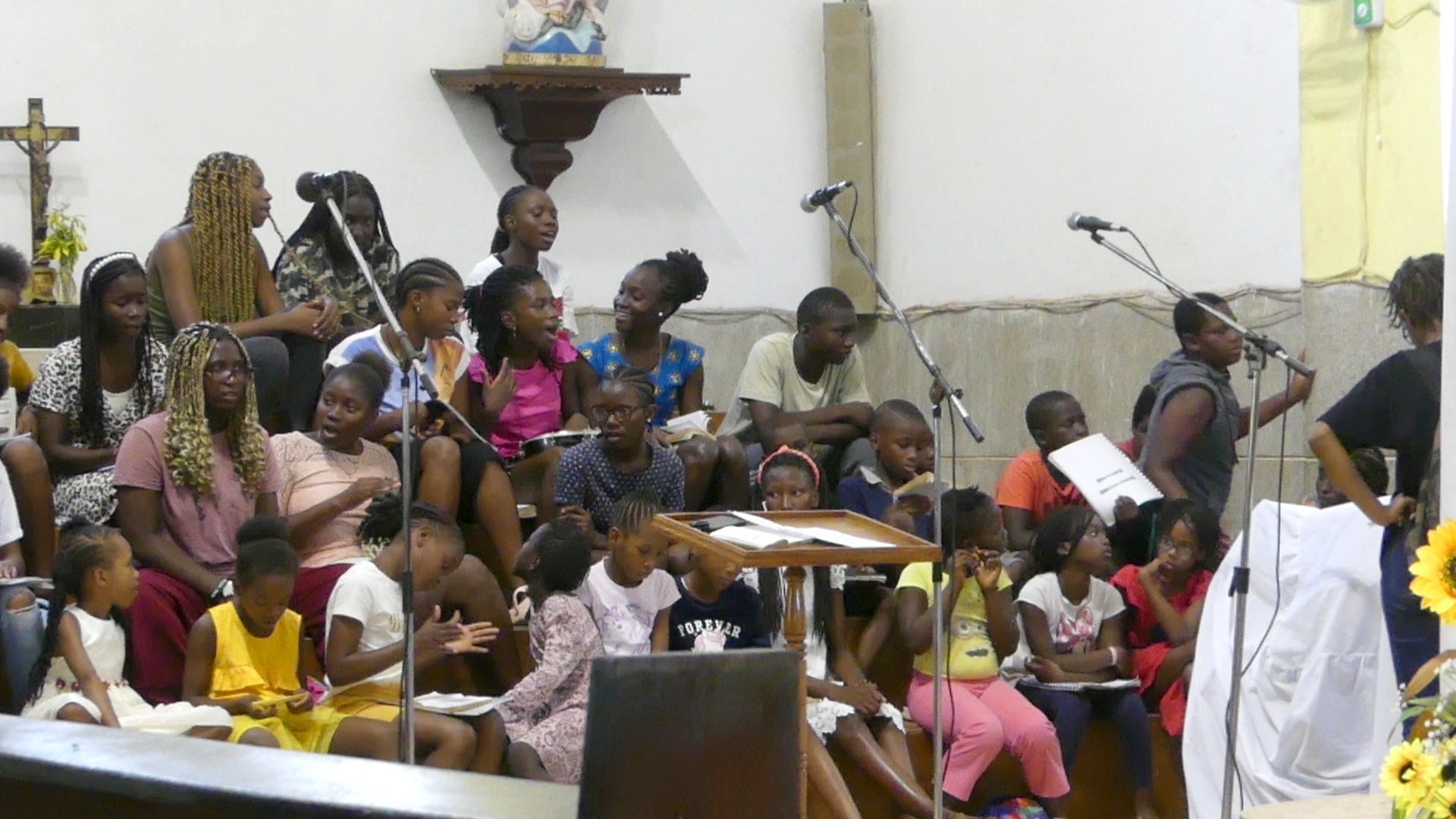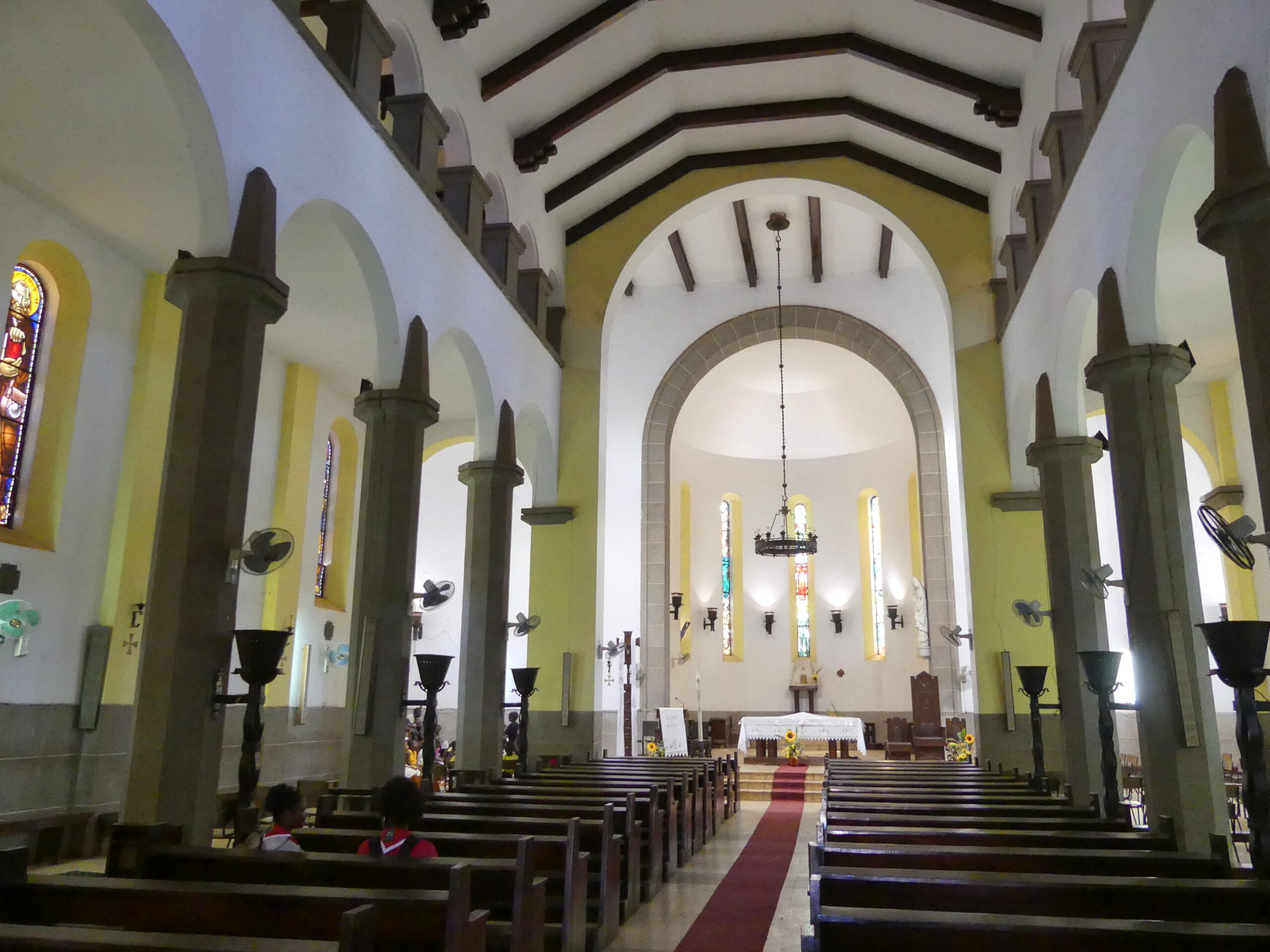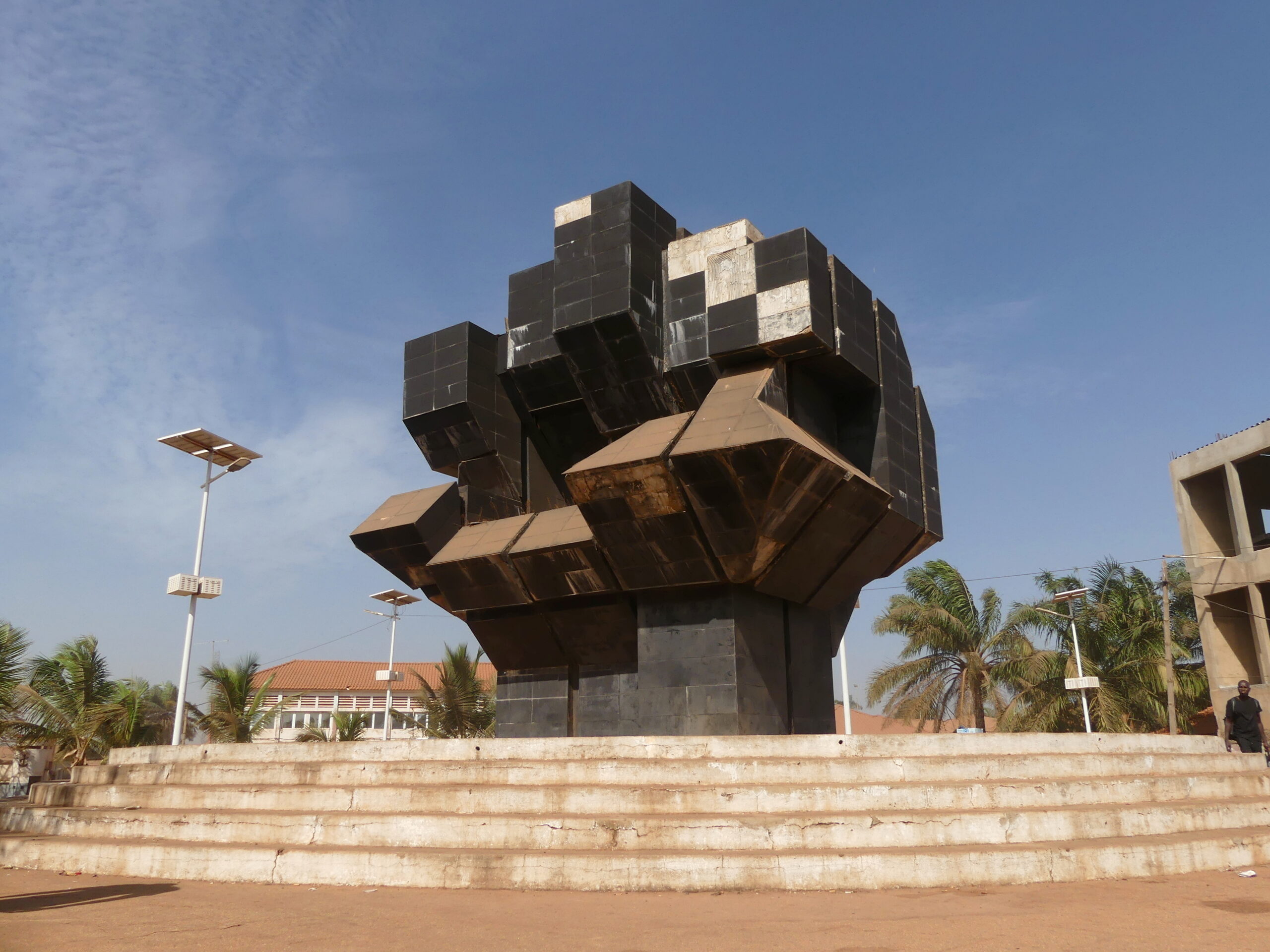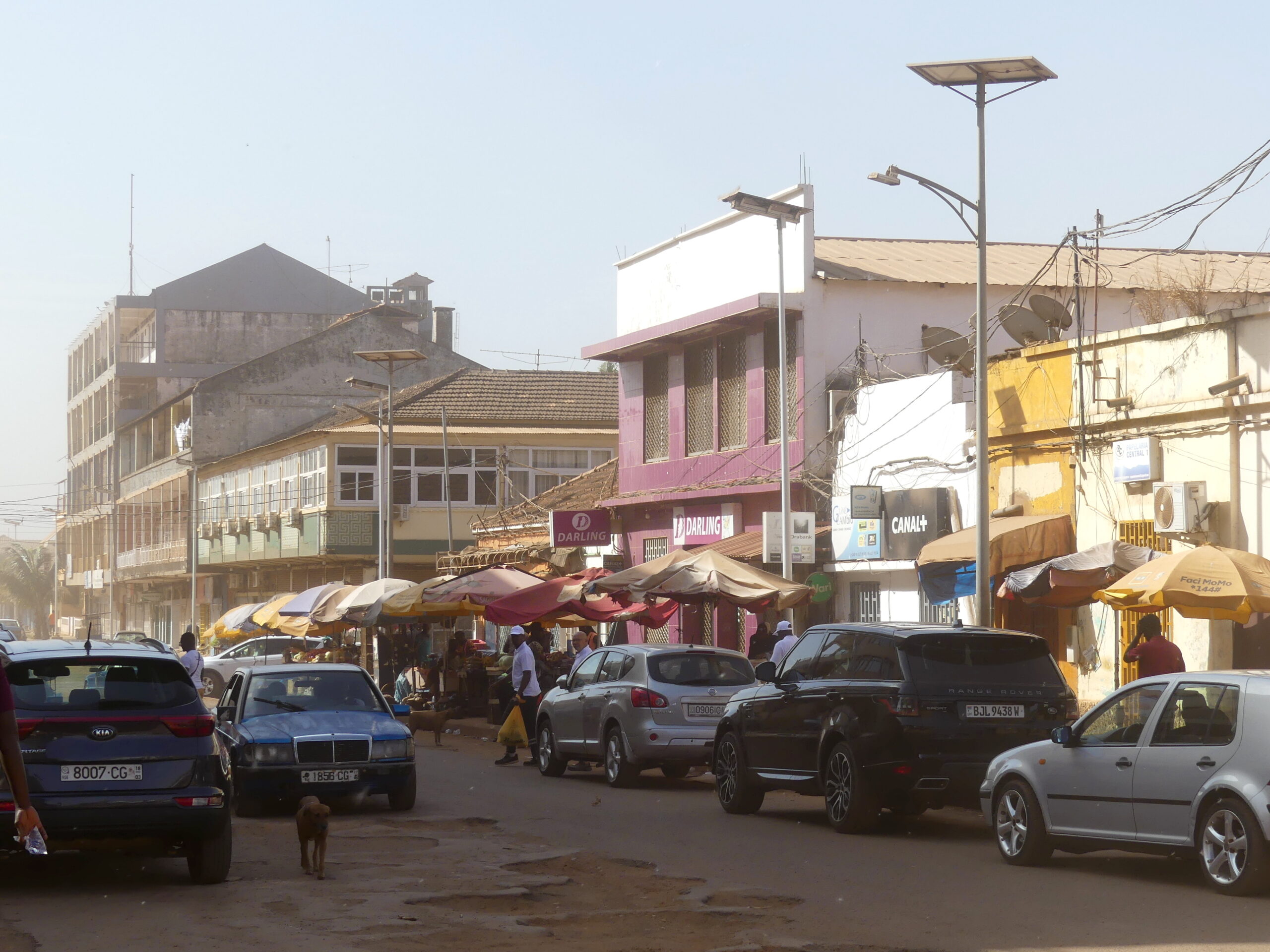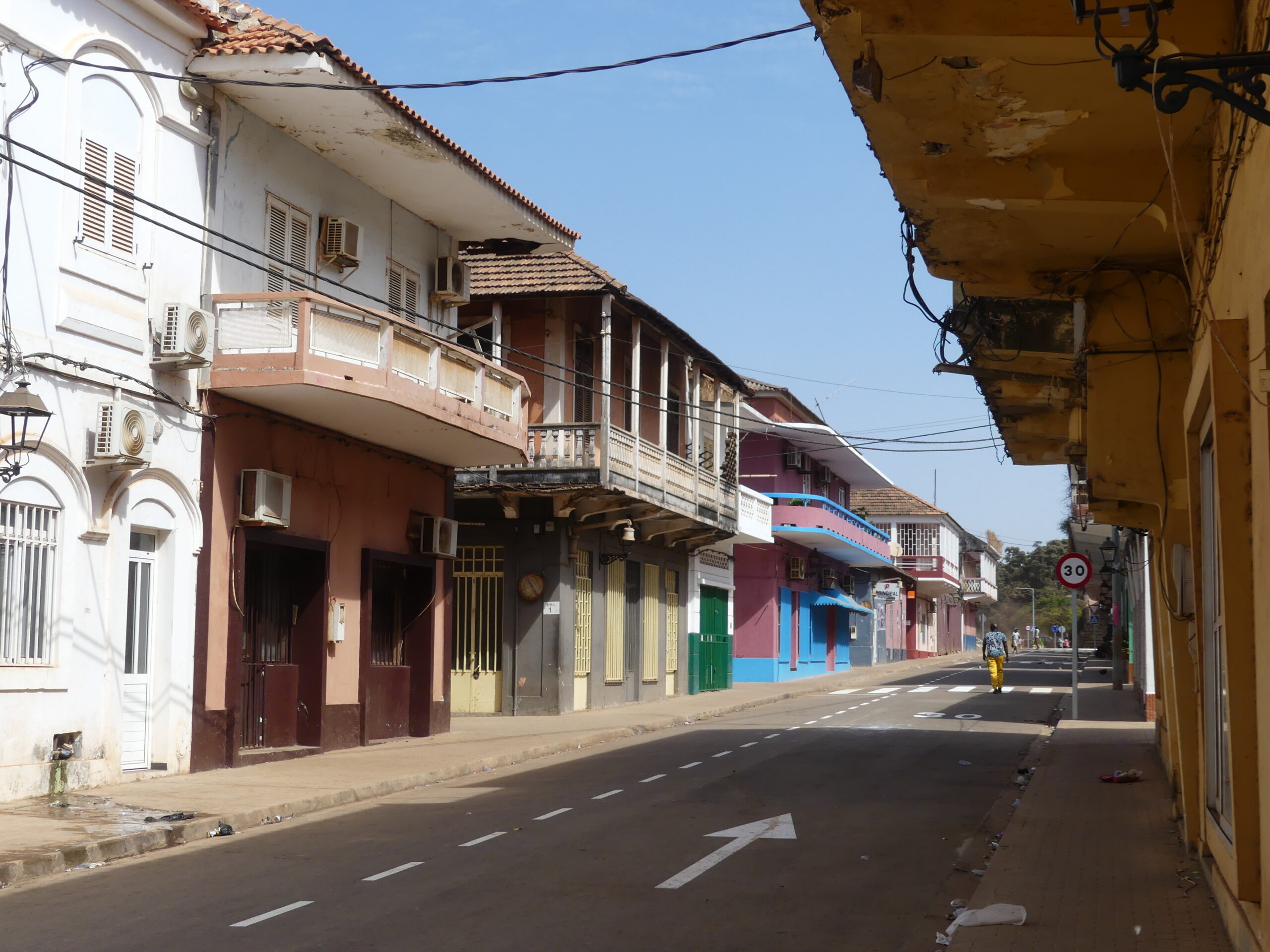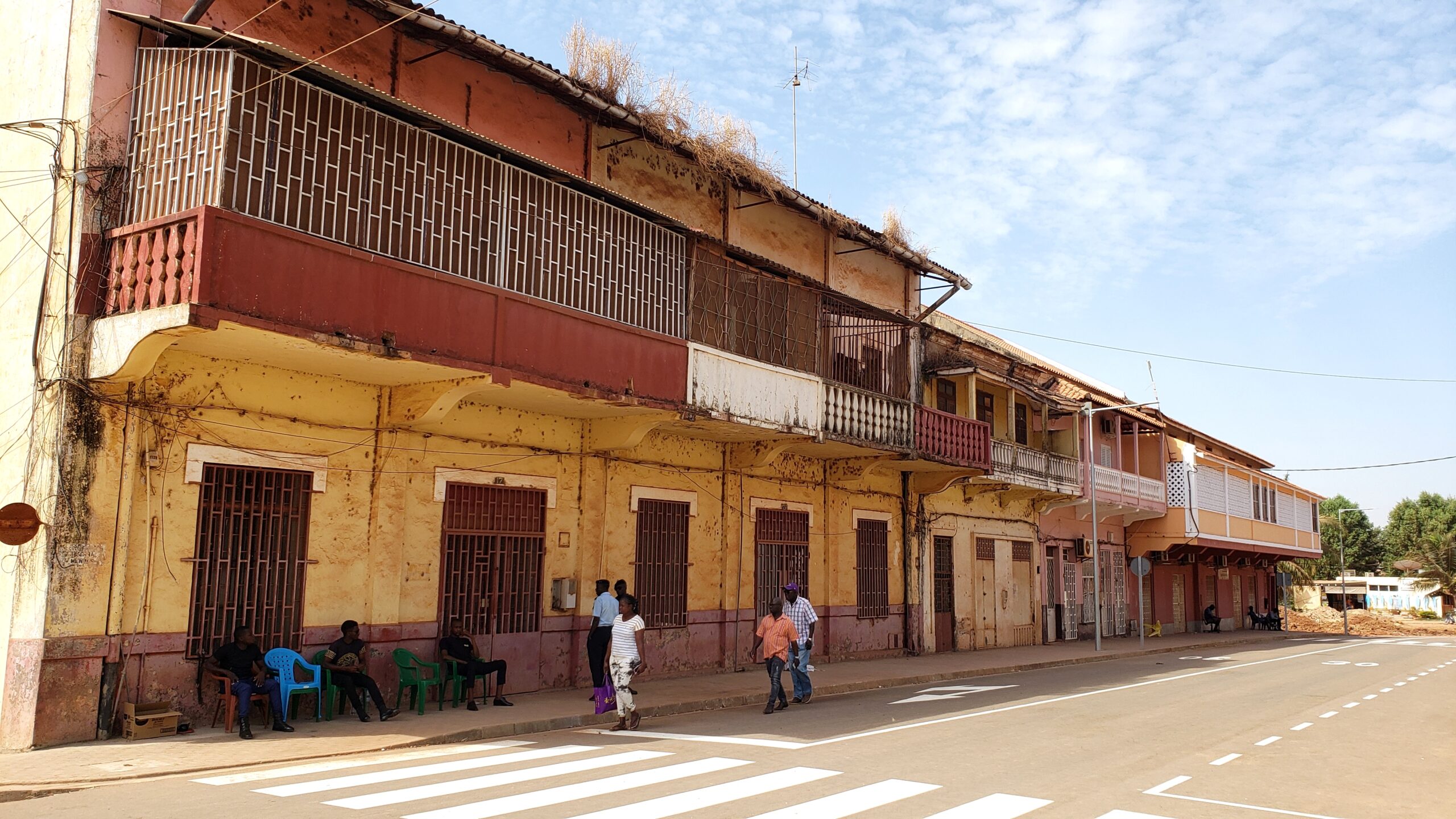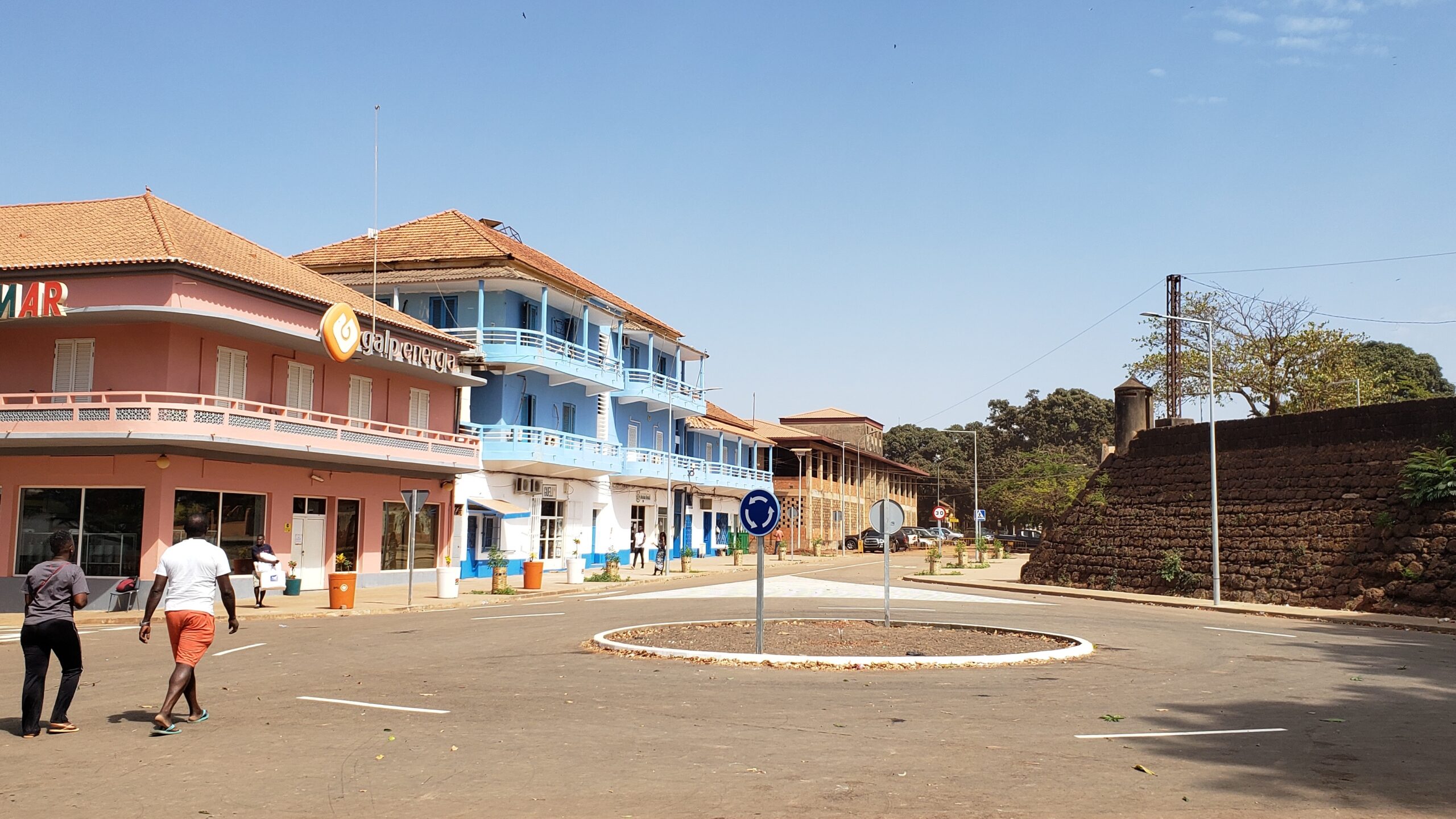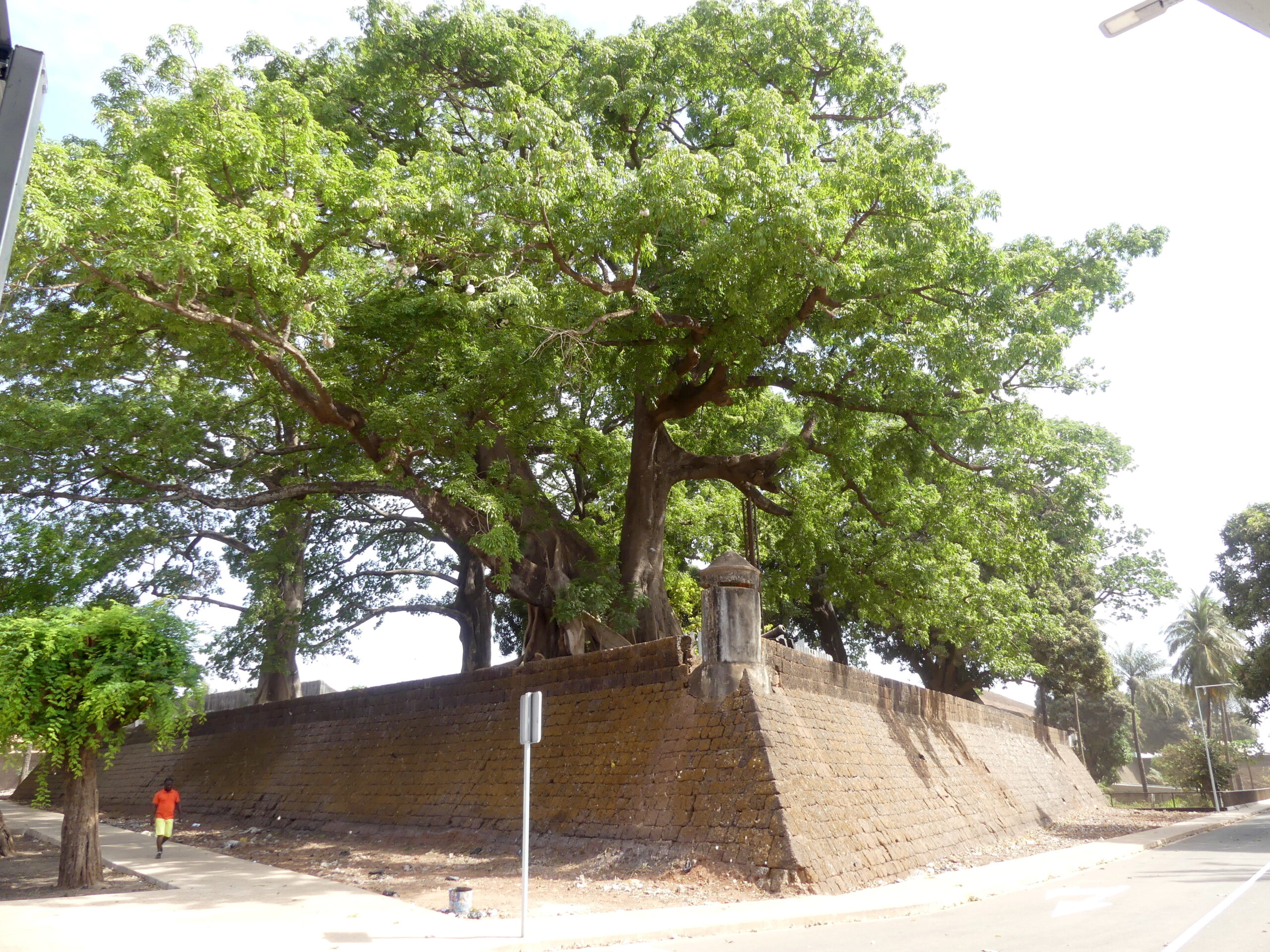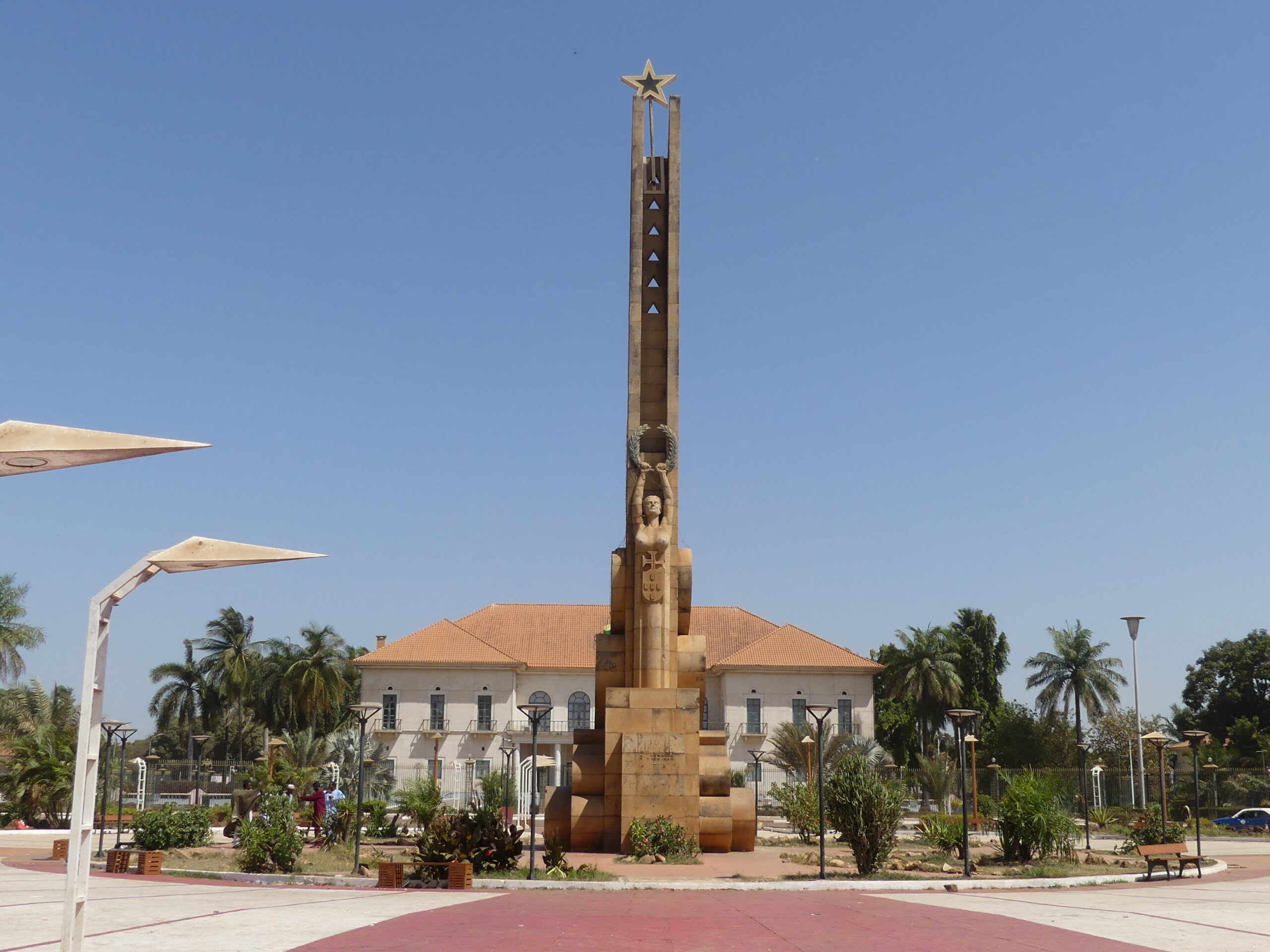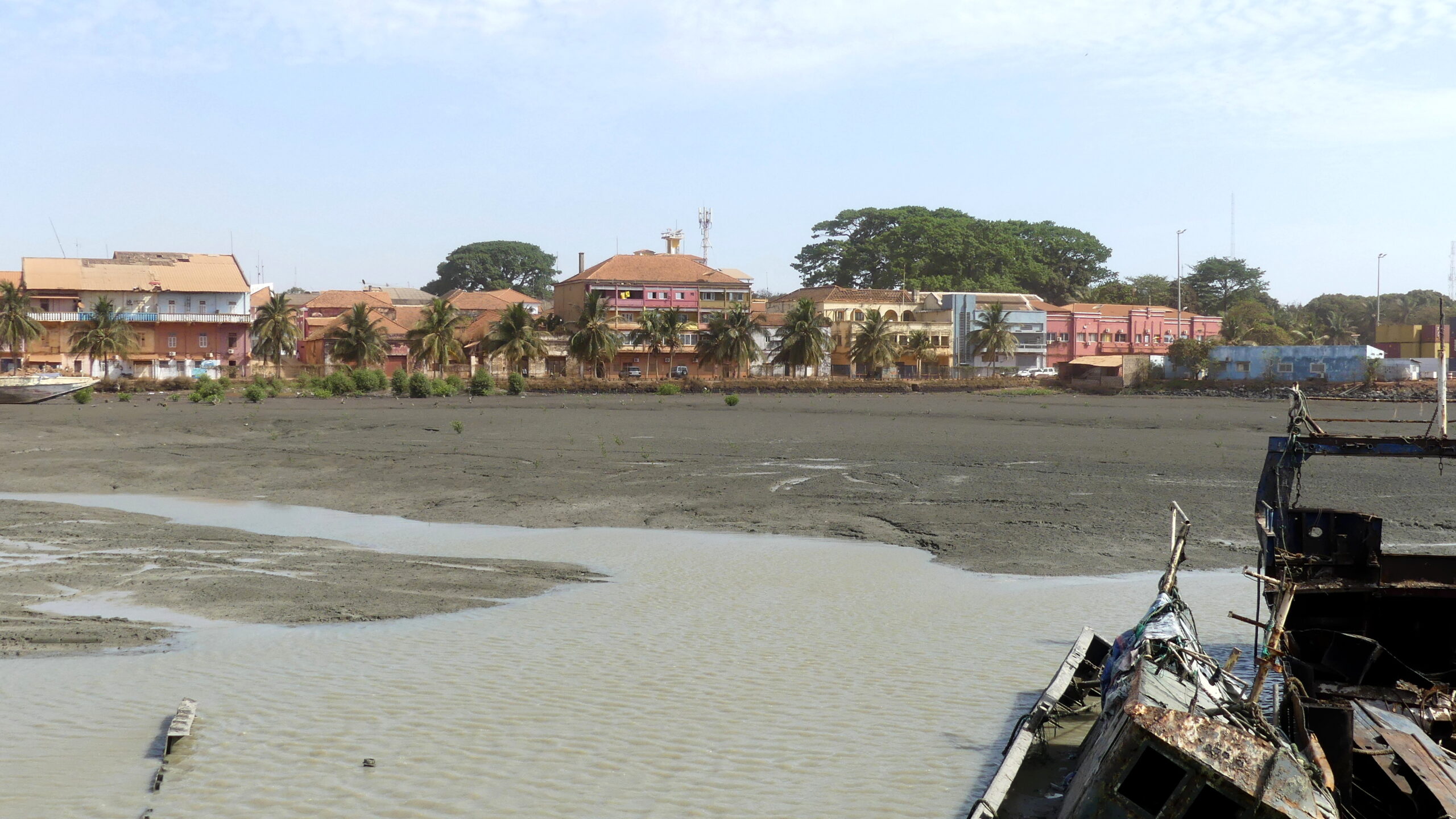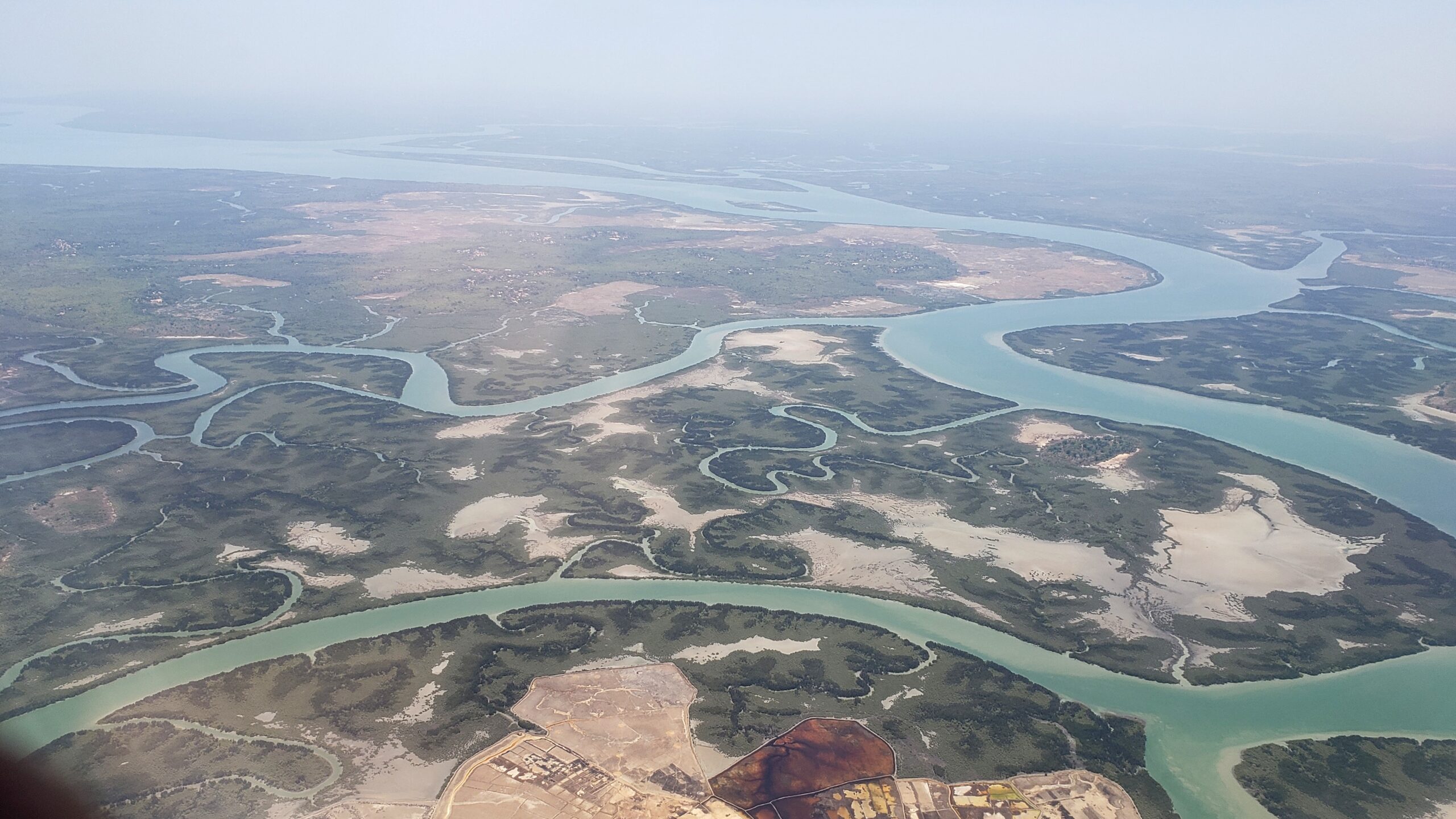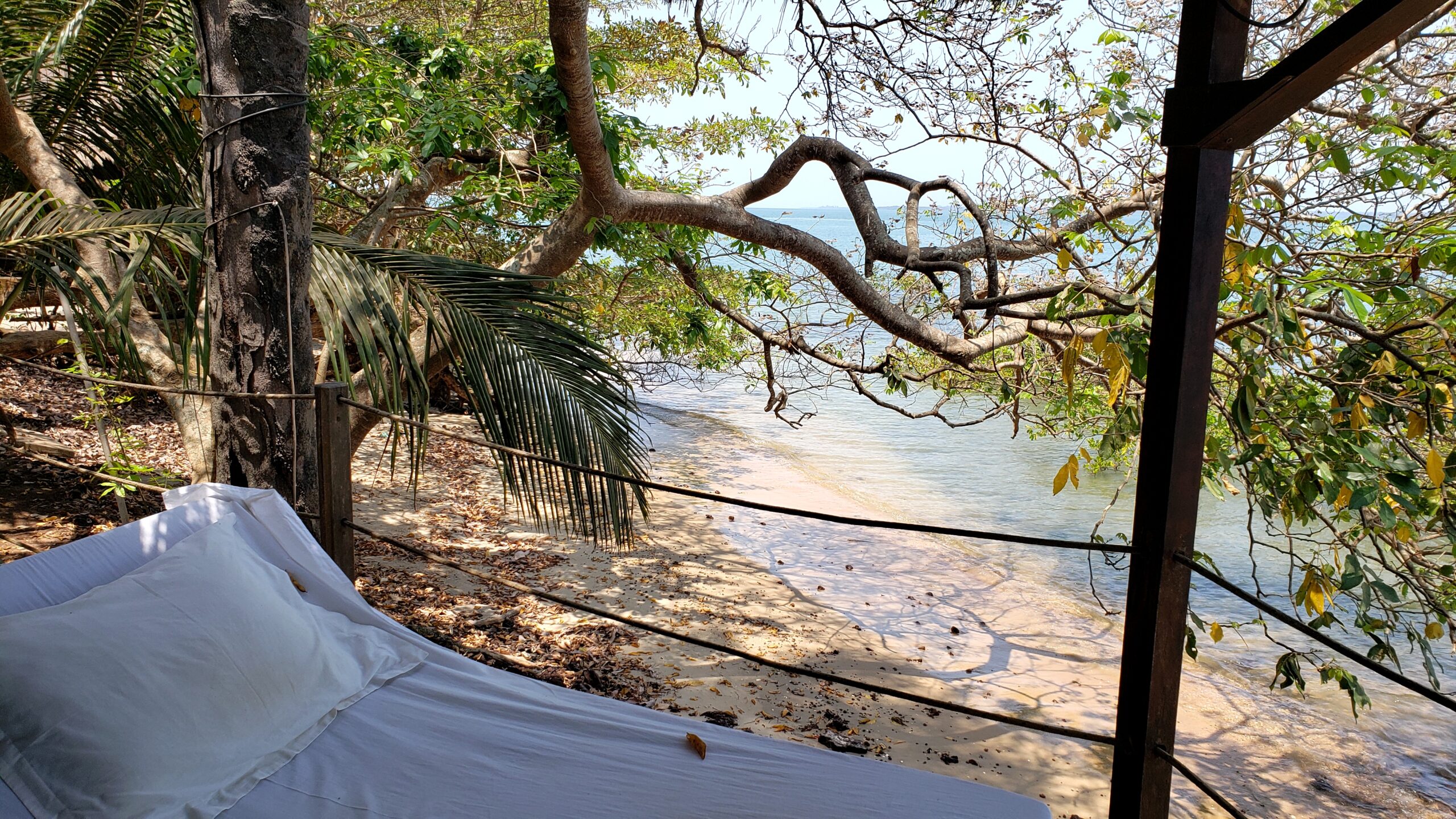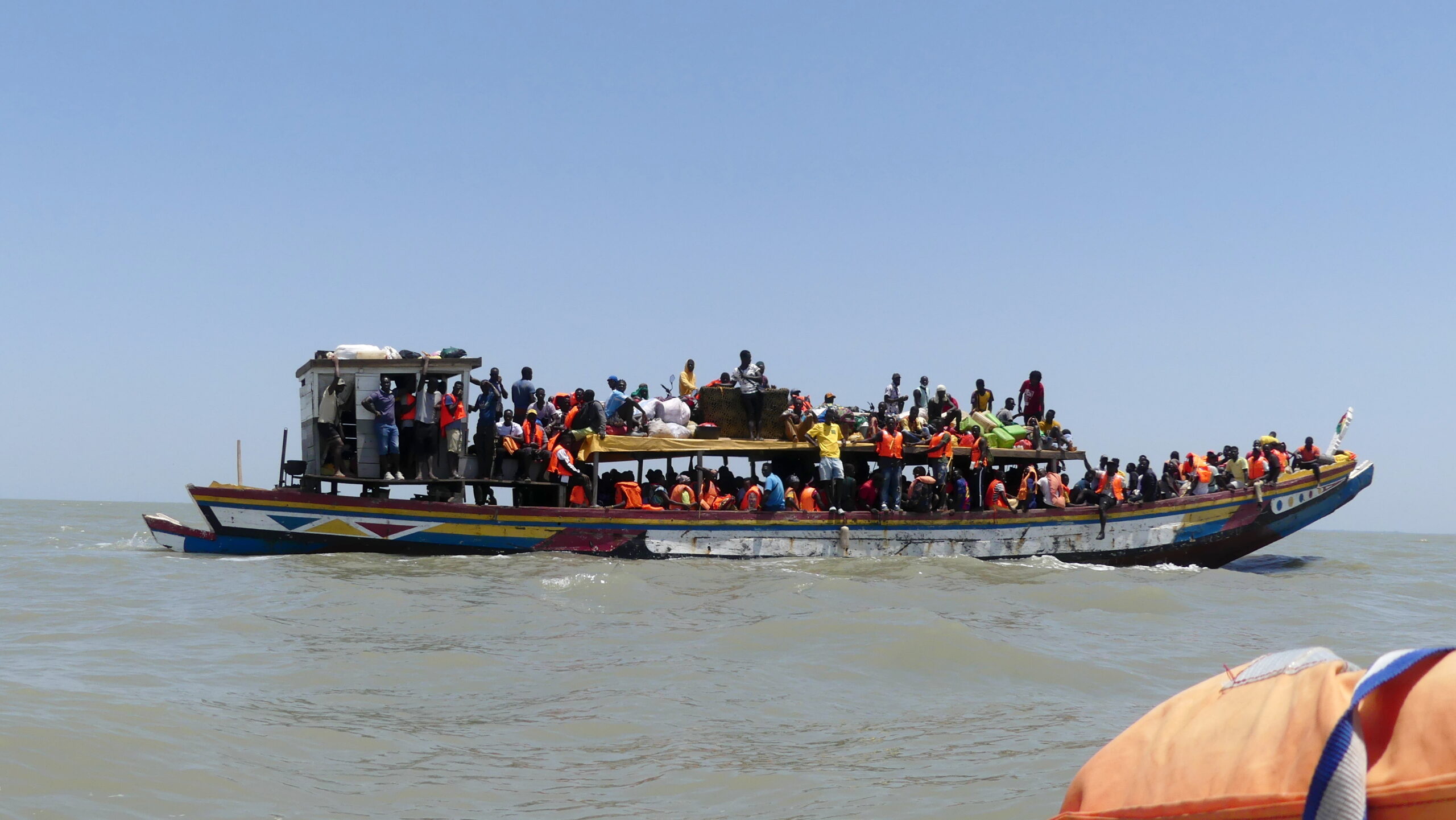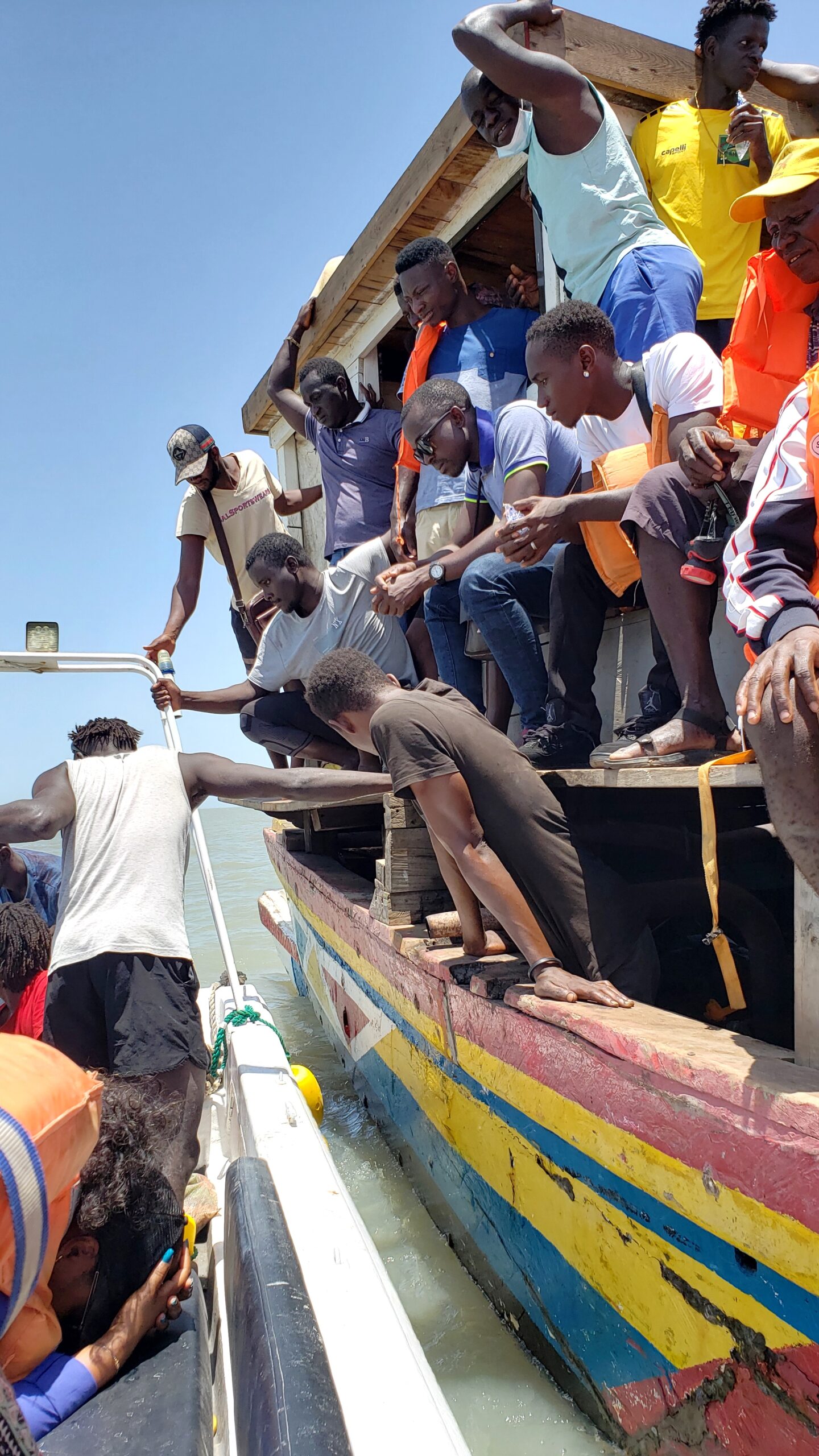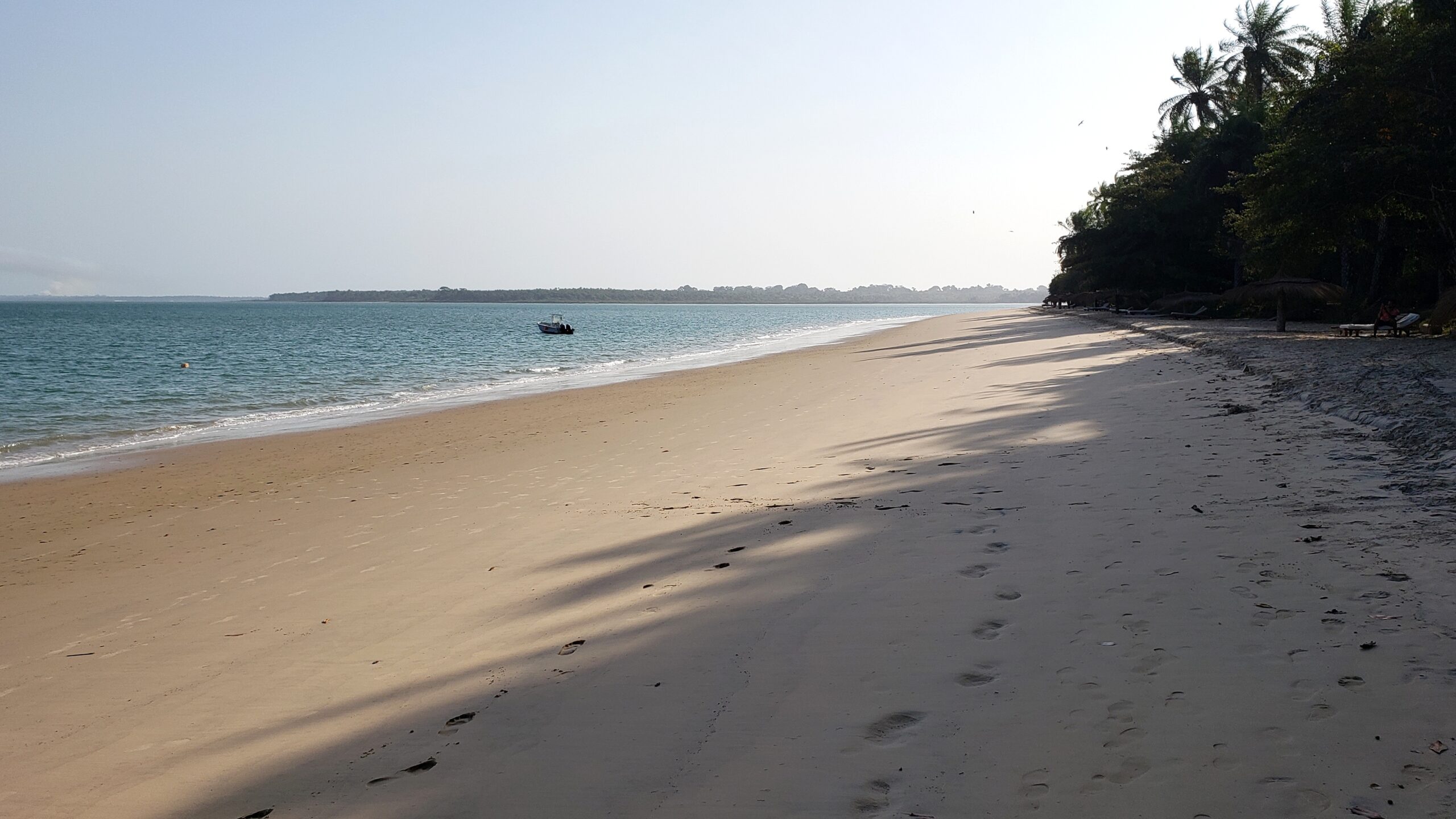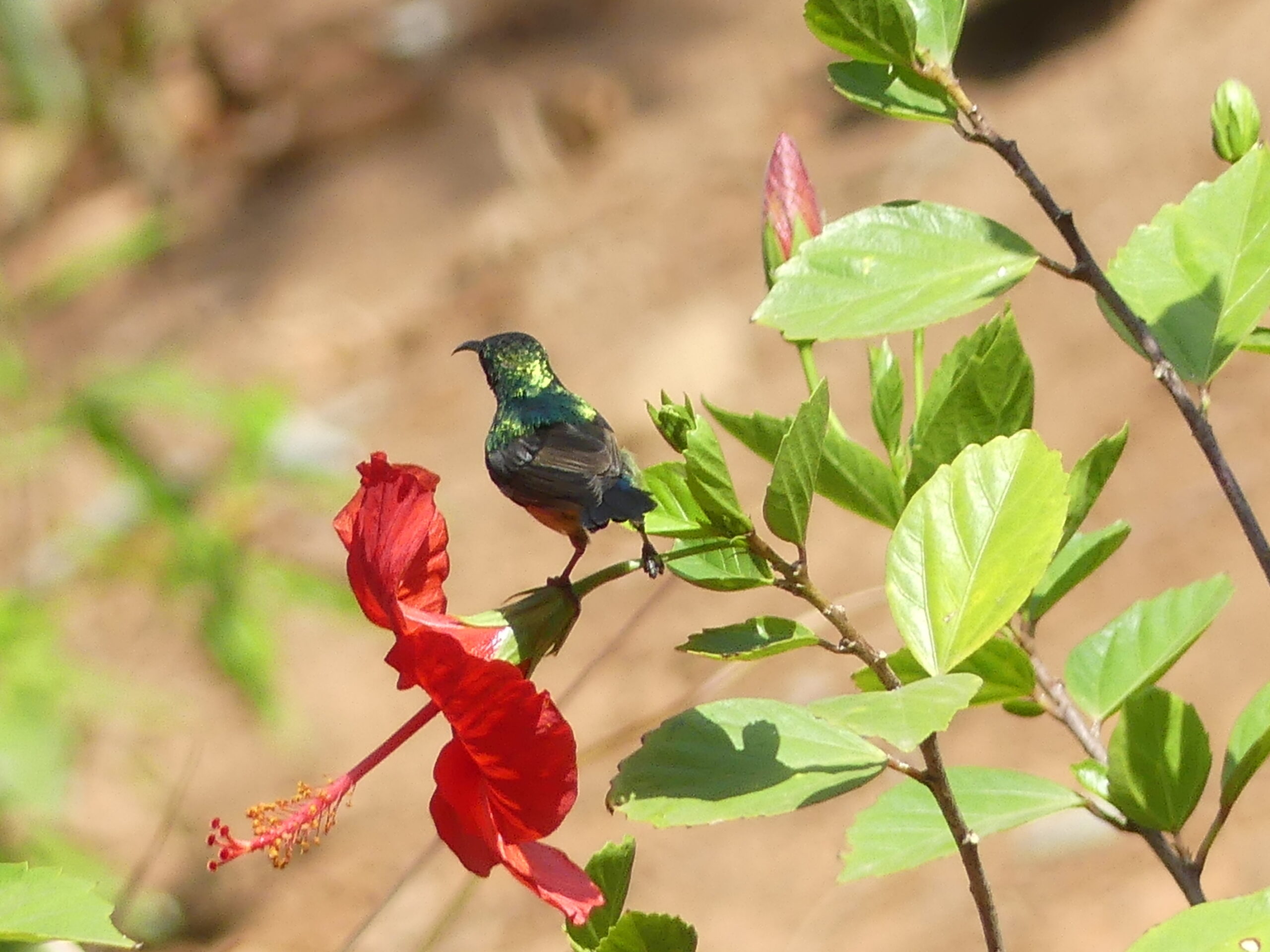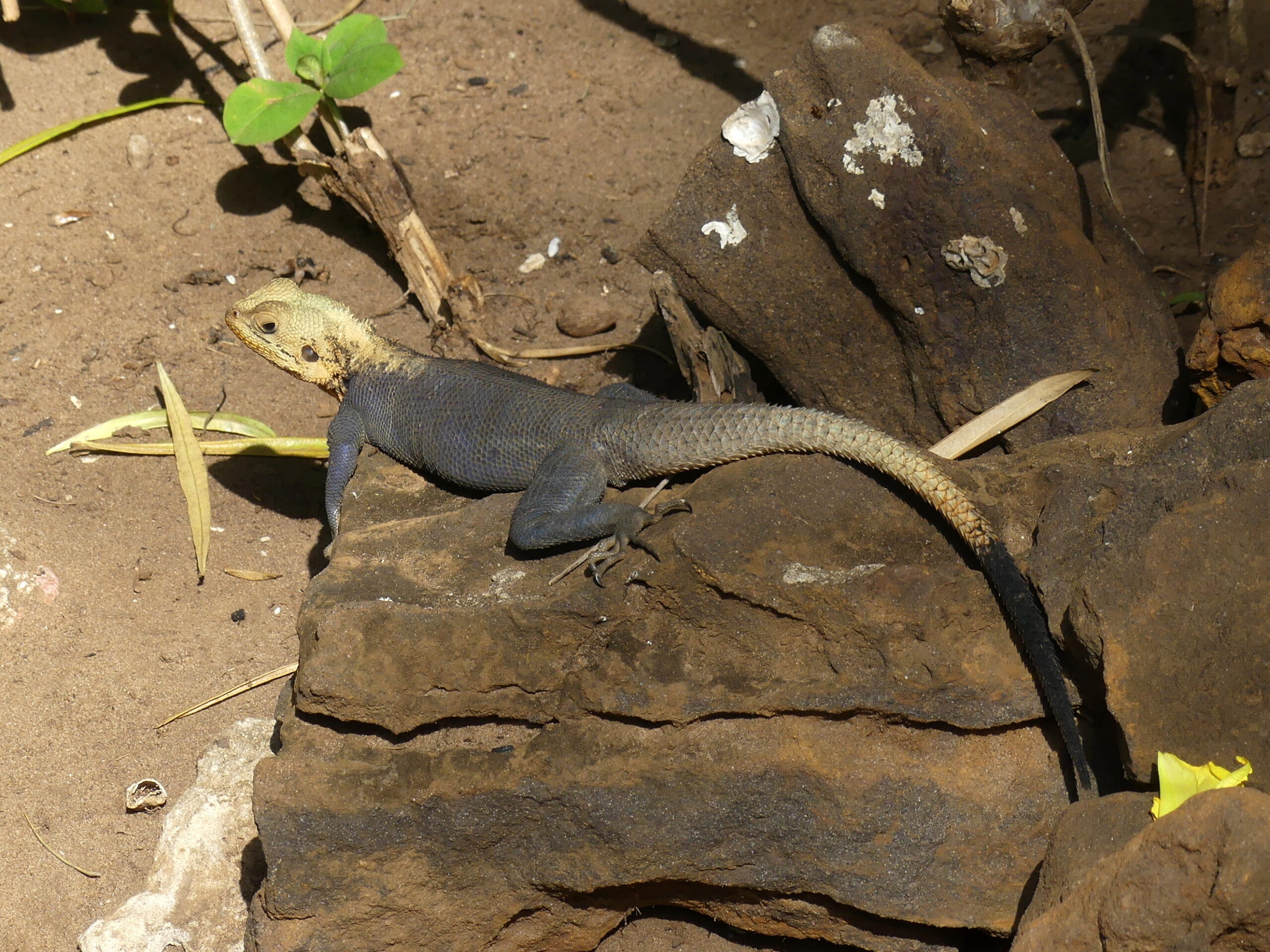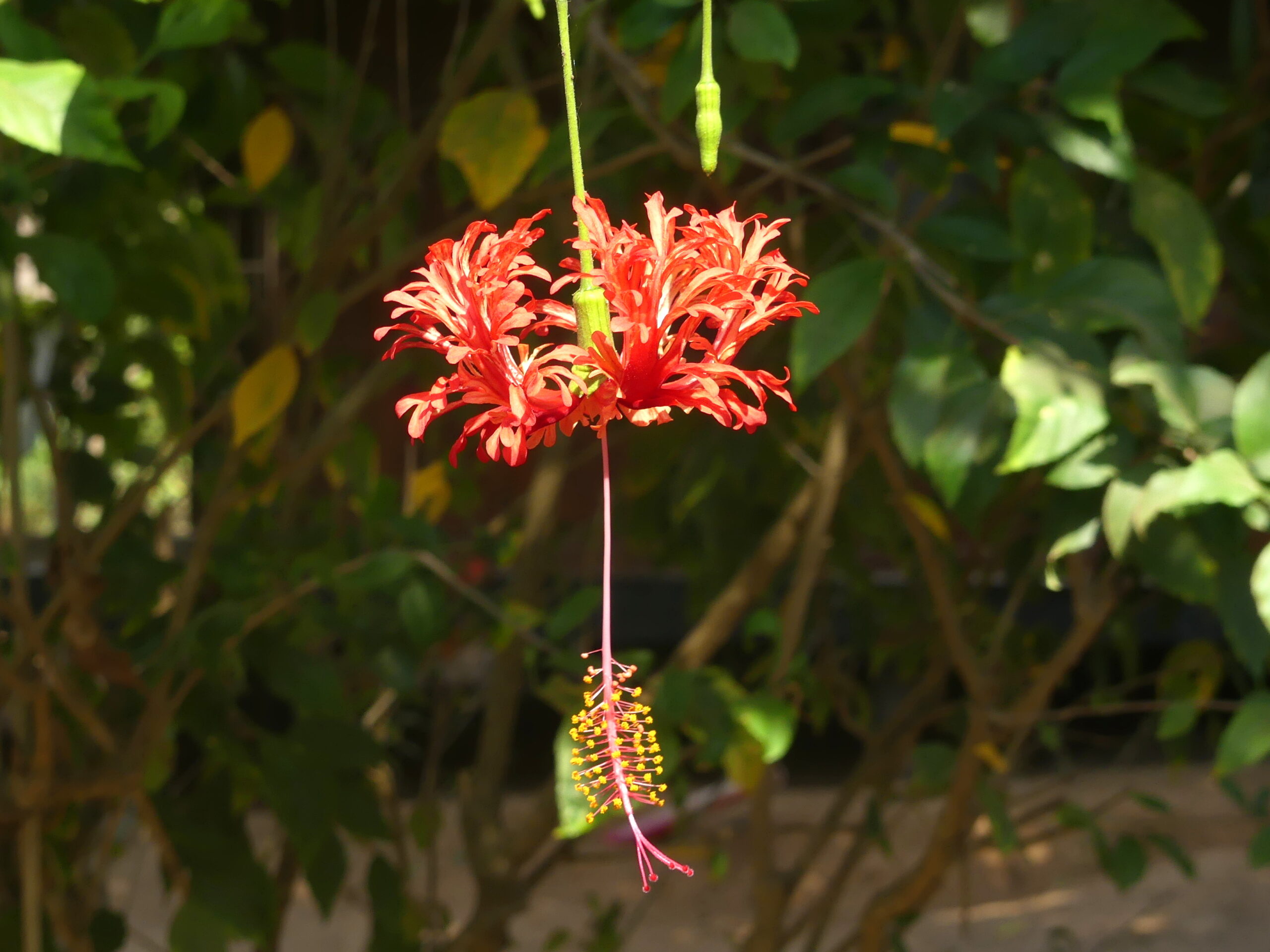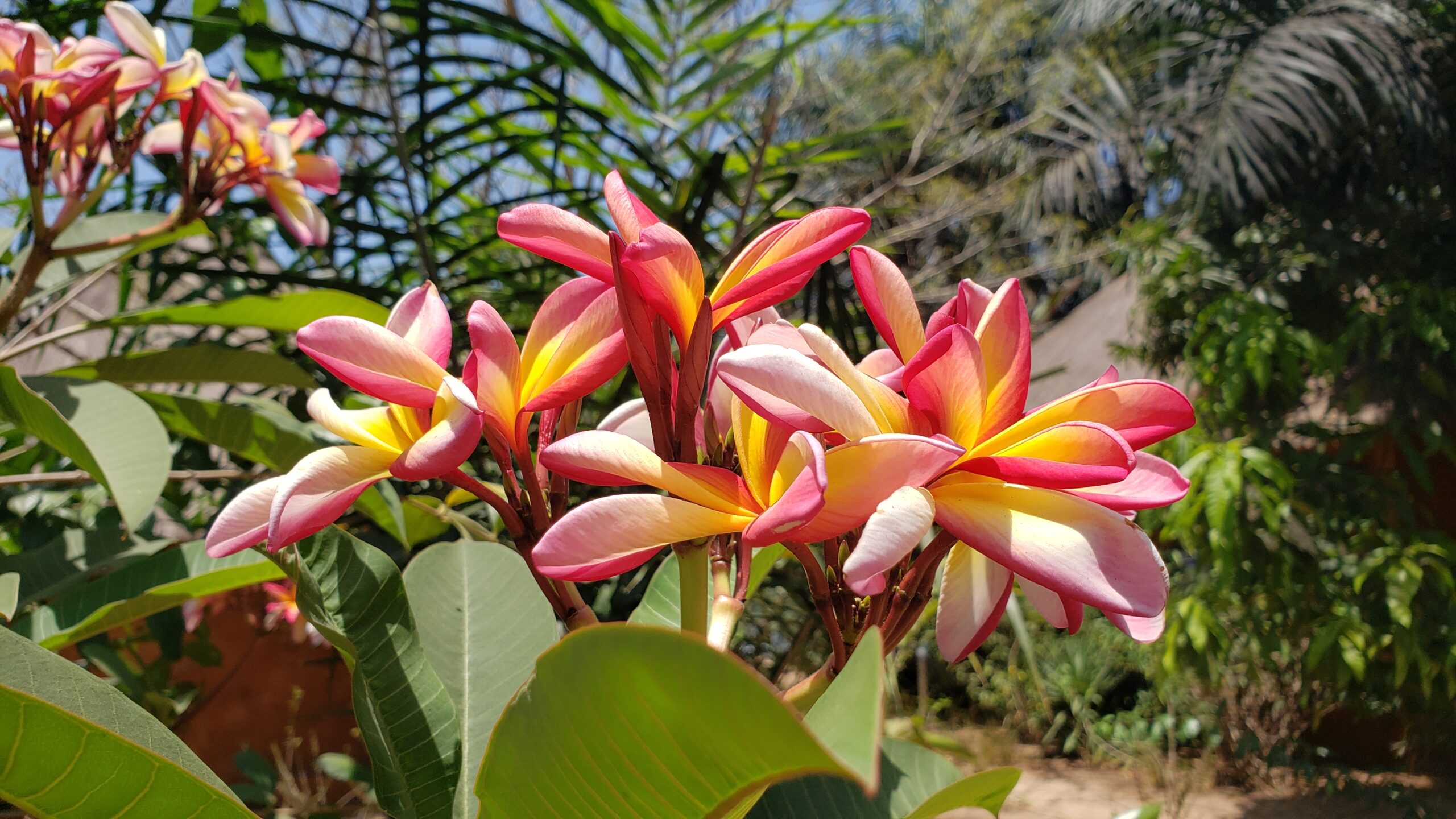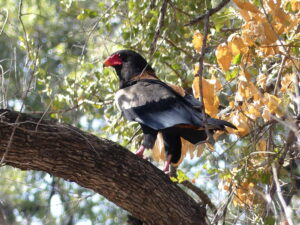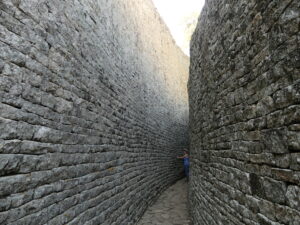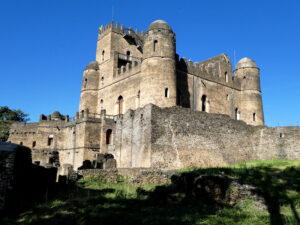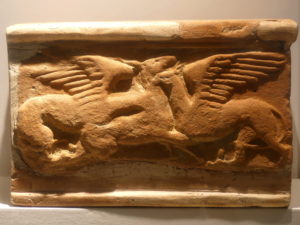Why go to Guinea-Bissau, one of the poorest countries in Africa? Only freed from Portuguese control about 50 years ago, the country was then riven by civil wars and dictatorial rule. Signs of economic weakness and disrepair are everywhere, especially east of the coastal capital of Bissau. The roads – whether dust-blown dirt or rutted asphalt – are in terrible shape.
Why go? We were intrigued because it was the home of our market vendor in Lisbon. Yet we also saw once again how people do well when they have sufficiency and community. The marketplaces are abuzz with goods and activity. Everyone seems to belong, to be connected, to have a home. Old colonial structures are creaky, but kept habitable. We could look past the patches into the resilient spirit of the people.
Eastern Guinea-Bissau: Bafata and Gabu
This was one of the better dirt roads – and one of several surprisingly lovely allees – on route eastward to Bafatá and Gabu, the larger town, several hundred very slow kilometers inland.
The roads are just one of many tough conditions in the country that citizens regularly surmount.
This is the street market in Gabu, block after block of tightly packed stalls and shoppers. You can find nearly anything you need here, from clothing to machinery to tech goods to food. Not everyone has plenty, but there is plenty to be had there. And it’s nearly impossible to thread your way down the street. It’s a slow slog. Though clearly not locals, we were accepted as just another element in the throng, pushed past or offered “good prices” like anyone else. We were even able to find school supplies and soccer balls to donate to the local school.
People gathered at the local hair salon in Gabu, with a bicycle stall to the left and street food to the right. Women generally wear eye-popping fabrics like these; men wear jeans and t-shirts. Everyone sitting here seems to have opted for the hairstyle promoted on the poster to the right.
At Bafatá, the former port operated at this confluence along the Gêba River. Traces of the port are now barely detectable. The river enabled lucrative trade in peanuts, cattle, and textiles over the centuries. Bafatá’s rich clay soil also made it a robust brickmaking center. Though, sadly, the factory has closed down, the bricks it made can be found in the buildings all over town.
Bafatá is a smaller town than Gabu, but we slept in Bafatá because it had the richer history as a trading center, plus the most appealing hotel in the region. The Triton offered large simple rooms surrounding a colorful courtyard, a huge pool to cool us down in the 40+ degree C (110 F) heat, and A/C when the electric grid worked in town (7pm to 6am). A police training session met here while we were visiting, so the hotel was completely booked.
The main street of Bafatá, as it slopes down to the old trading market center and river port, marked by the forest green at the upper left. We spoke with some Bafatá families that occupy the striking colonial-era buildings now.
The old Governor’s House in Bafatá during Portuguese rule is now a Regional Education Center. Notice the balustrade decoration and veranda, which are typical of so many buildings in this former colony.
Along Bafatá’s main street, this neat and simple colonial building has lasted for decades since independence, and – as the antenna reveals – has been re-purposed as the headquarters of a women’s radio station, Radio Mulher.
A group of men fussing with cars across the street could not explain why it was there or the programming.
The old Bafatá marketplace near the port had been restored since the Portuguese left, but has again fallen into disrepair.
In the old market center of Bafatá, several impressive buildings still seem in good shape.
The statue marks the end of Guinea-Bissau’s colonial control by honoring Bafatá’s native son, the renowned intellectual and fighter for independence, Amilcar Cabral. He was assassinated less than a year before his efforts succeeded here. We visited his birthplace and childhood home in town, now a simple museum about his life.
Bafatá’s Our Lady of Grace (Nossa Senhora da Graça) is a Catholic cathedral dating from Portuguese rule, and still seems in good shape. The country is largely Muslim in religion, but the churches remain active.
This Portuguese-built home in Bafatá was a typical one occupied by local residents near the commercial street grid of town. Almost all the streets were unpaved, very dusty in the dry season, but muddy during the rainy. We saw it while hunting for restaurants listed on Google Maps, most of which seemed to have closed in the last few years.
We ended up in a restaurant that was really just an extension of a local home, but with superb and custom-cooked food. As electricity restarted the city lights at 7pm, the cook’s very loquacious Spanish husband talked non-stop at us for 15 minutes though we only understood bits of what he was saying.
Capital City of Bissau
The resilient spirit of citizens of Guinea-Bissau, despite the poverty, and signs of an improved future were most evident in the capital city.
Robust marketplaces, malls, infrastructure improvements, street renovation, and new buildings form the most obvious indicators in an expanding city. But we also observed the promise in the young boys and girls, gathering for school on weekdays or scouting on weekends, who could make its future happen.
Some shoppers in the Bissau market area pass by a rhythmically named pharmacy.
On the corner of the sprawling marketplace, Bissau’s busiest roads meet at a roundabout that causes very slow-moving traffic. Those roads are always lined with shoppers as well as the capital’s ubiquitous blue and yellow mini-vans. For 25 cents, those bus people to destinations out of the center as clearly marked on their signage.
On the steps outside the Catholic cathedral, hundreds of young people stood at attention or sat in groups or worked on projects – as in a church-sponsored scout event. They mostly ignored the noisy construction project that was revamping the long adjacent boulevard.
Inside, many others joyously filled the space with song as they rehearsed hymns inflected with a Creole beat.
The interior of the Catholic cathedral in Bissau from 1935 echoes medieval and colonial-era church styles. While listening to the swinging children’s chorus, we delighted in the contemporary stained glass portraits of the apostles along the sides. The church tower also operates as a lighthouse for ships nearing Bissau on the Geba River estuary.
On a blustery day, the gusts along the old center of Bissau whipped the dirt of the unpaved road all around us. This is the original “high street” of town, heavily used as a main commercial street now and as a colonial business center back to the 19th century. Throughout Senegal and Guinea-Bissau, the taxis – like the one in blue following the dog – are nearly all old Mercedes-Benzes, patched up and kept running by crafty mechanics. At the nearby roundabout, a monument to Ché Guevara recalls the Marxist revolutionary zeal that inspired people to rebel against Portuguese colonial rule.
The Fist of Timba near the old docks of Bissau: The most notable – as well as rugged and powerful – monument in the city marks the 1959 massacre by the Portuguese state police of striking dockworkers demanding better pay. Dozens were killed and many others thrown into prisons.
The violence convinced leaders like Amilcar Cabral to turn to militant action against the colonial rule until independence in 1974. We thought it represented the hand of a dockworker or revolutionary demanding rights. But another interpretation is that it’s the clenched fist of the colonialists keeping all the riches to themselves.
The central city is a UNESCO World Heritage site, filled with colonial buildings in typical Portuguese style – some in disrepair, but many already renovated. During weekdays, the streets are busy, but are very quiet on weekends.
A street in colonial Bissau with distinctive Portuguese architecture. Most of the restored buildings are used now for government ministries and businesses, so the streets are very quiet on a weekend day.
Some of the most impressive structures, like the one headquartering Galp Energy, gleam outside the large Amura fort.
On the opposite end of the fort’s footprint, a massive, centuries-old kaopak tree still stands guard. The Amura fort dates from the mid-18th century during the 150 years that the Portuguese were profiting from the slave trade out of Bissau. They were concerned about the French military who were strong in Senegal and nearby Guinea. The fort is difficult to visit since it’s still an active military base.
Uphill from the old city and the port on a main street that was being renovated while we visited Bissau, one finds newer buildings. This roundabout at its top, named Heroes Square, is full of ironies. It’s a popular gathering spot in the evening, especially for young couples, at the high end of the main boulevard (now under renovation) leading through the old city to the waterfront.
The large column, adorned with emblems of Portuguese triumph, was built in 1941 when the capital shifted to Bissau. Oddly, it celebrated a mid-19th century revolt in Portugal itself. In 1974, Guinea-Bissau didn’t destroy it but just renamed it as a celebration of its new independence, topped by a revolutionary star. Facing it is the headquarters of the PAIGC, the revolutionary party that Amilcar Cabral founded to kick out the Portuguese.
Lastly, the presidential palace behind it, another assertion of Portuguese rule, is unoccupied, we were told, and perhaps haunted. Past presidents there have not done well, either assassinated or nearly so in coups. Recently Chinese construction companies renovated it, but perhaps did not change the luck. They also built the Parliament in the city, a building that’s constantly in need of repair.
Back at the older colonial center, and along the old harbor, many of those UNESCO World Heritage buildings form an impressive lineup. There appeared to be significant commercial activity at the newer facilities far away from the pier we’re on. But low tide near the old port city exposed many disused boats wallowing in the mud.
The waterways of Bissau irrigate the land today, and helped create the enchanting Bijagos archipelago off the mainland. The main channel is the Geba River which ends in an estuary some 15 kilometers (10 miles) wide near the port.
Bijagos: The Playground of Guinea-Bissau
It’s busy beneath the surface of the sea within the archipelago of Bijagos, a UNESCO-declared biosphere reserve off the coast of Bissau. This sprawling array of 88 islands, formed from the delta of the Geba River, teems with wildlife. Out there, we saw birds and fish, flowers and plants, cocktails and fruit. Mostly we relaxed, however, in a bungalow by the sea, quieted by the slow ebb and flow of the tide on rocky shoals.
It took some effort to reach the islands: slow drives to and from the old port and costly powerboats rocking over choppy seas for over two hours. But here is where an incipient tourist industry can begin, increasing jobs and income for the country without destroying the rugged and unspoiled beauty of the place.
One object lesson on all this was our “rescue” of the local ferry boat stalled out at sea. In the midst of the two hour powerboat ride to the islands, our boat captain noticed the distressed ferry. It was a large, ramshackle ship that must have been carrying over a hundred people.
Not only were we obligated to help them by the rules of the sea, but our captain was also friends with the ferry pilot. The ferry engine had stalled out, and reportedly they had no communications with mainland help.
After a bit of discussion among the crews, we began to wonder if the ferry passengers might opt to swamp our boat or we might keep tipping anyway to the side during our linkup.
But we gave them the help they needed – a jump start. We handed our battery to their crew. They connected it while we and these intrigued onlookers watched, restarted the engine, gave the battery back, and then puttered off again…as did we.
Once on our island, our intent, though, was to relax at the finish of our strenuous six weeks travel in the heat and dust of western Africa. We were in the right place.
Early and later in the day, during which temperatures rose above 100F (34C), we could enjoy moderate air and water temperatures at inviting, empty beaches like this on Rubane Island.
The olive bellied sunbird turns his belly away from us but shone his iridescent back instead. It didn’t matter much where you were on the island to catch some beauty like this. We happened to have discovered Bob’s Fishing Village at the end of the island, a wonderful respite in the quiet season with a friendly bartender and seductive drinks. Many birds like this also came to visit.
We saw several of these striking lizards (agama?) around the island.
A spider hibiscus.
A rainbow of petals marks the Mexican Plumeria, which reminded us of Asia’s Champa flowers. Turns out that they both belong to the same genus of plant.
(To enlarge any picture above, click on it. Also, for more pictures from Guinea-Bissau, CLICK HERE to view the slideshow at the end of the itinerary page.)


